The document discusses key concepts related to tree data structures, including definitions of root node, edge, parent node, child node, siblings, degree of a node, internal node, leaf node, level, height, subtree, forest, binary trees, and traversal algorithms like preorder, inorder and postorder. It specifically covers array and linked representations of binary trees and provides examples to reconstruct a binary tree from its preorder and inorder traversals.
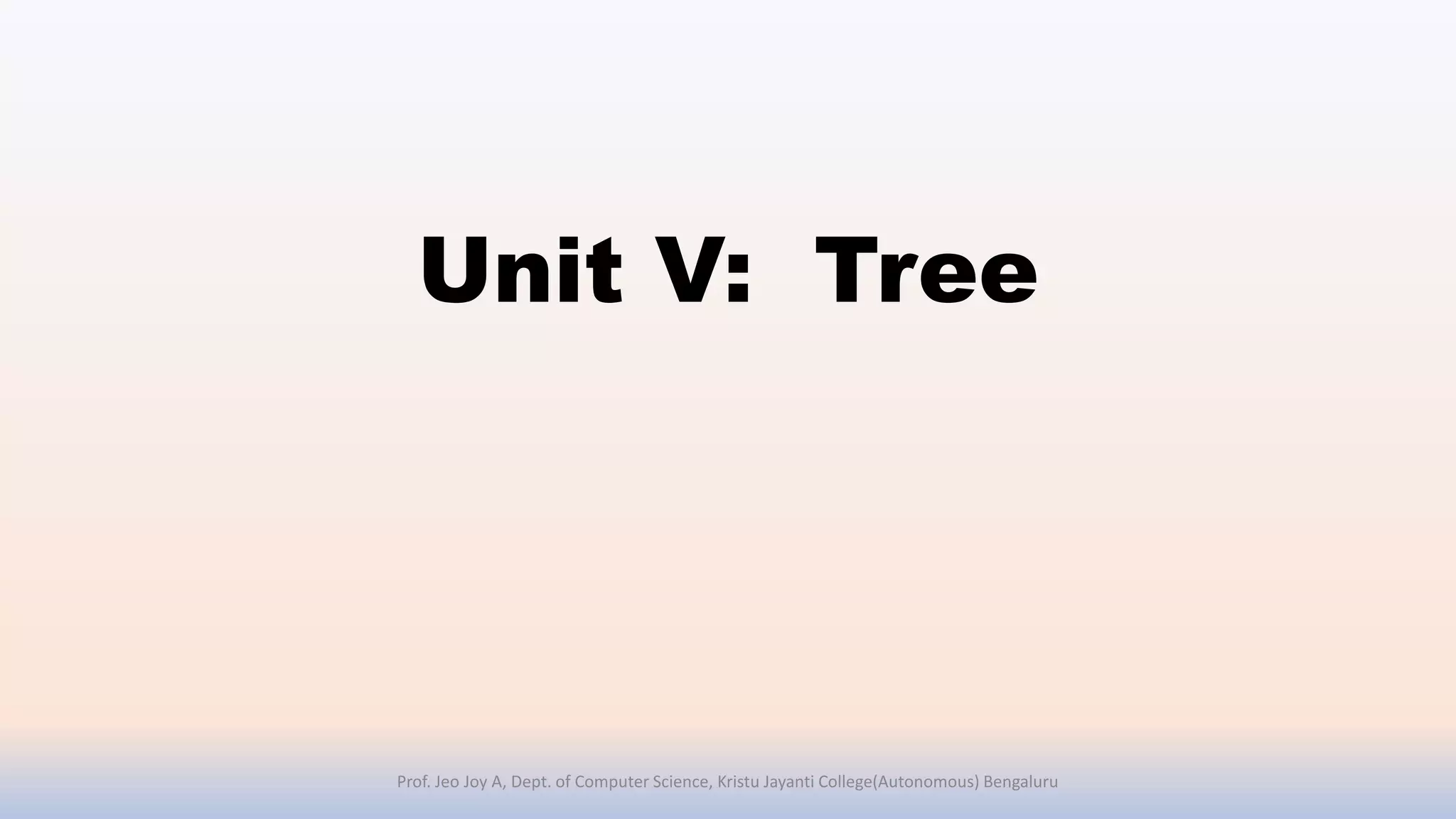
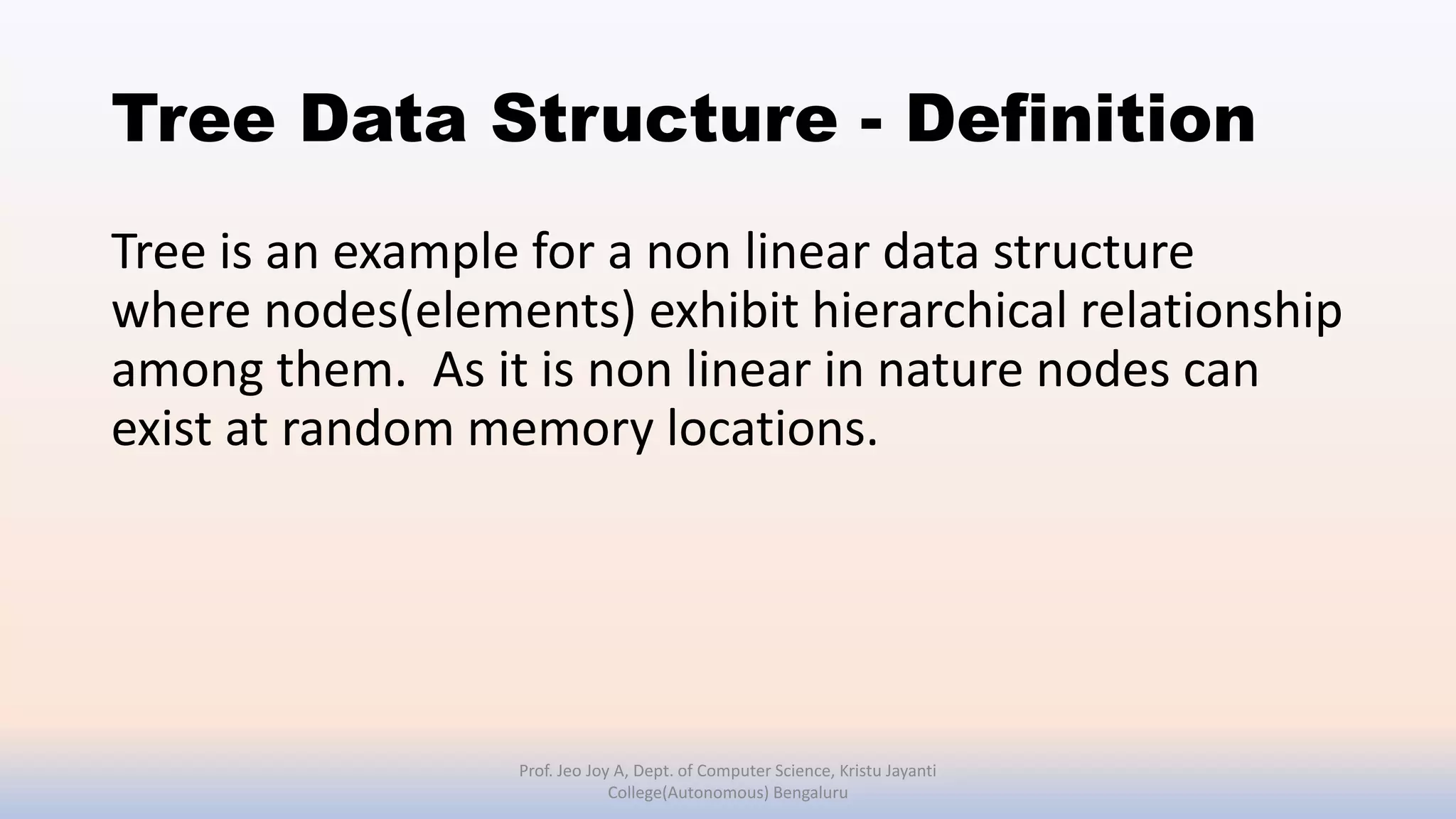
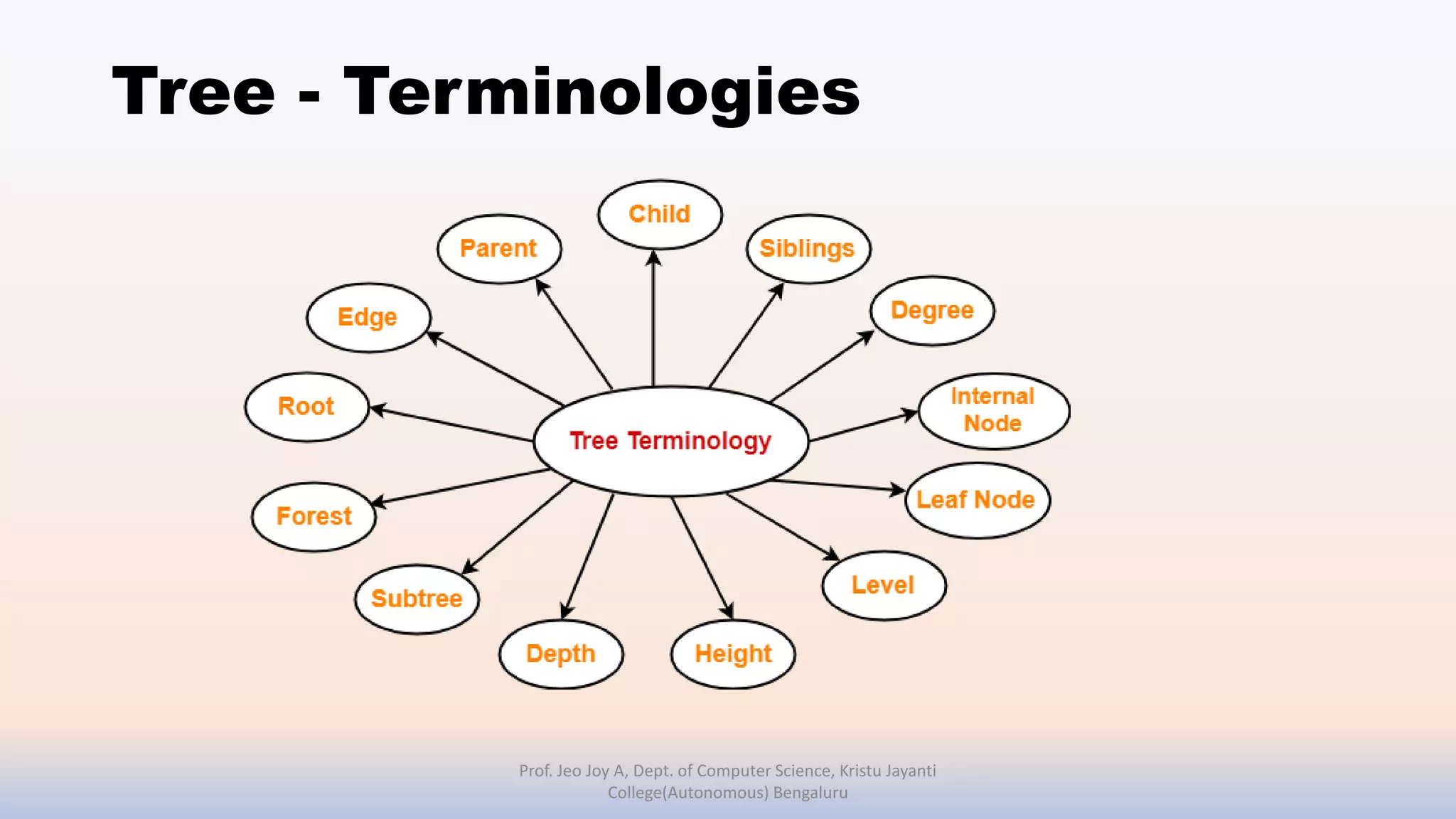
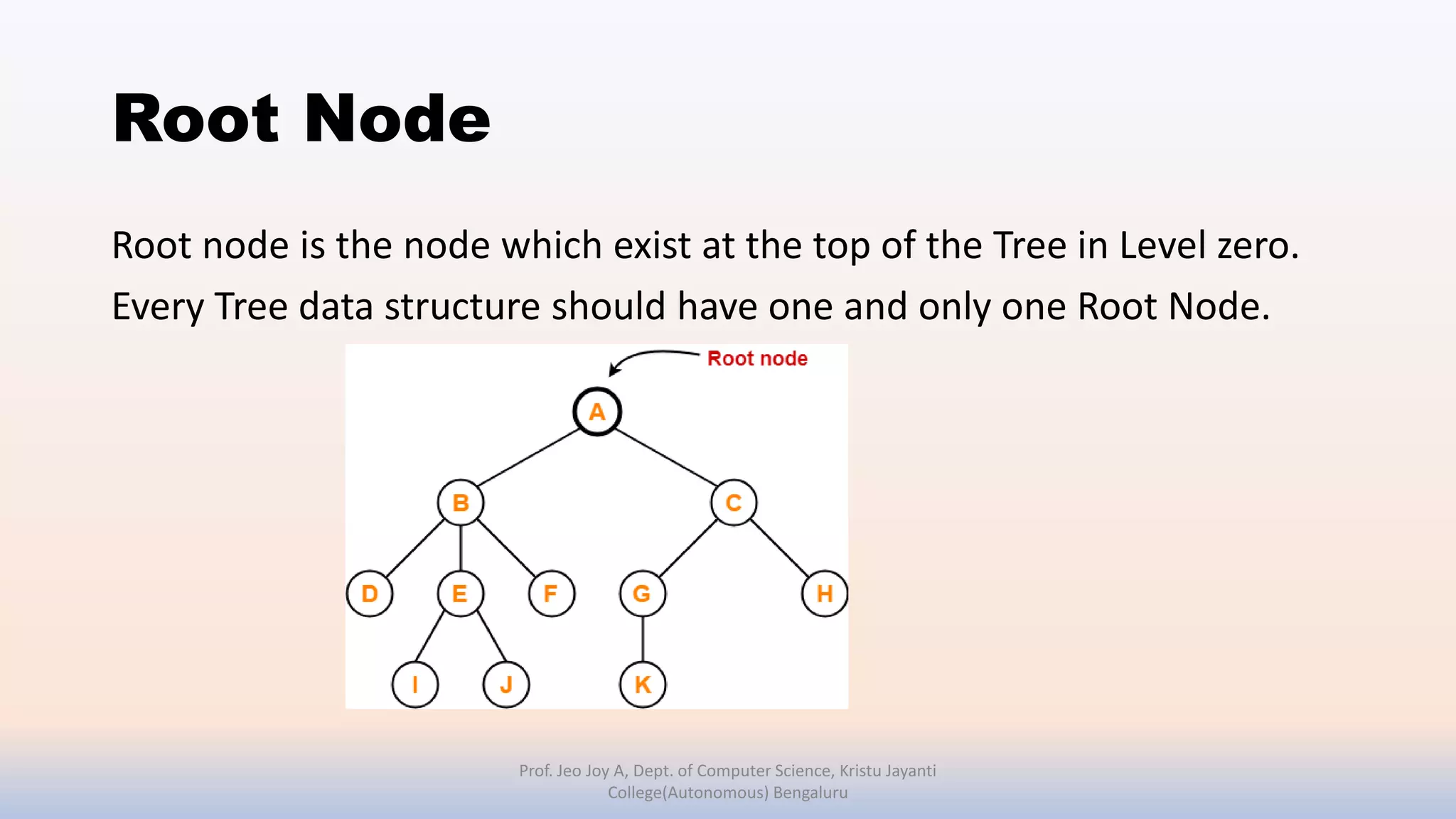
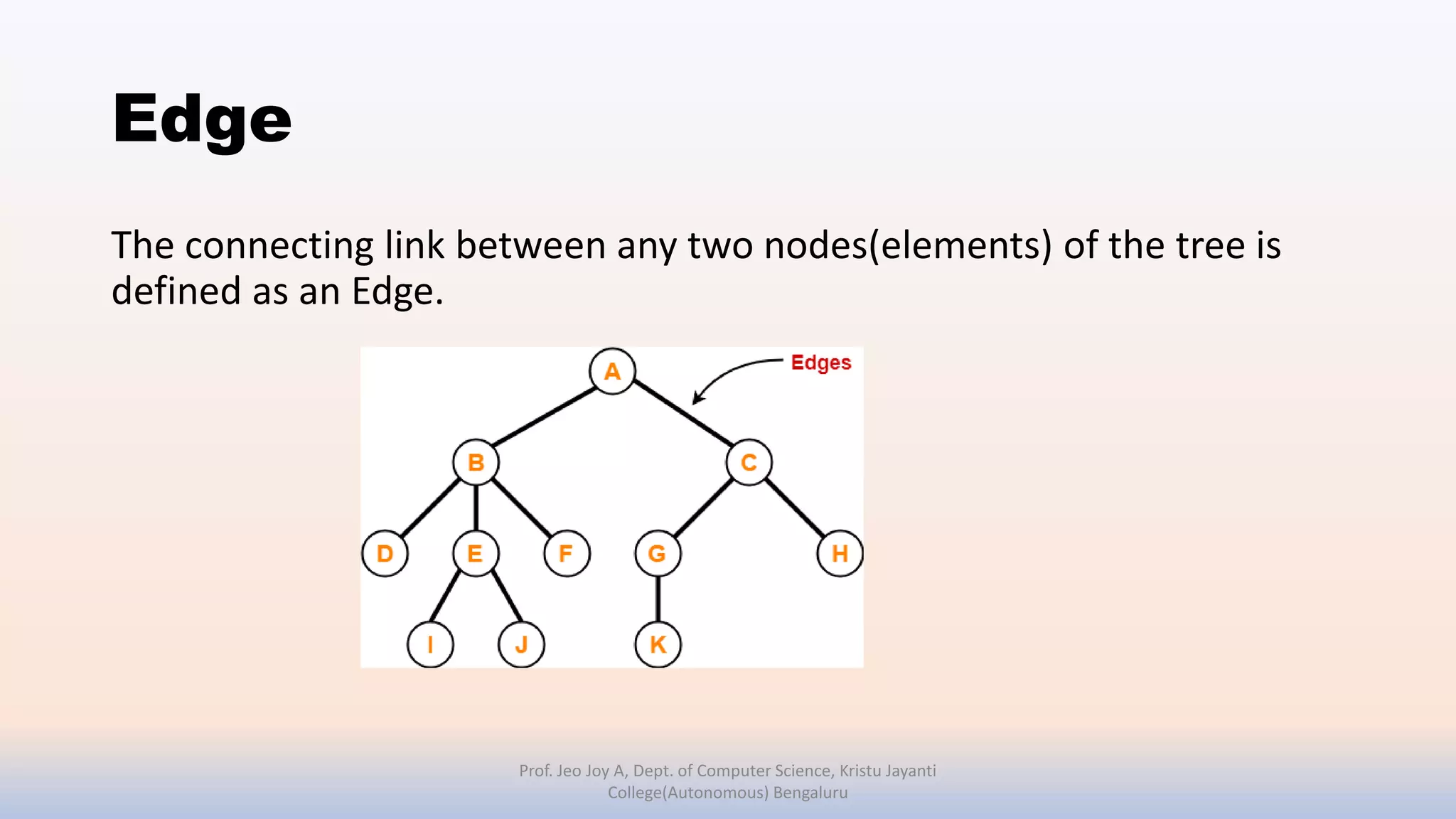
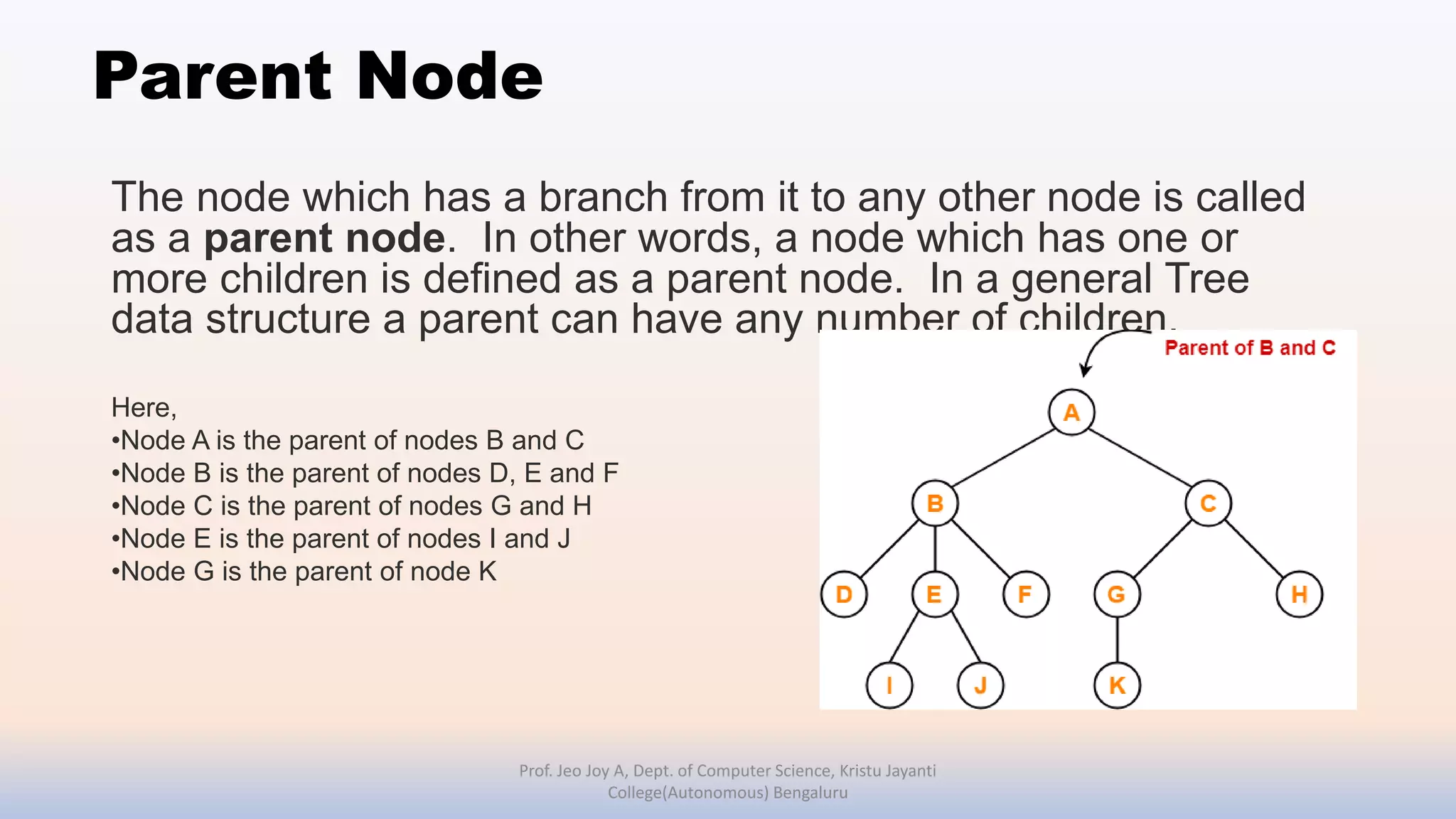
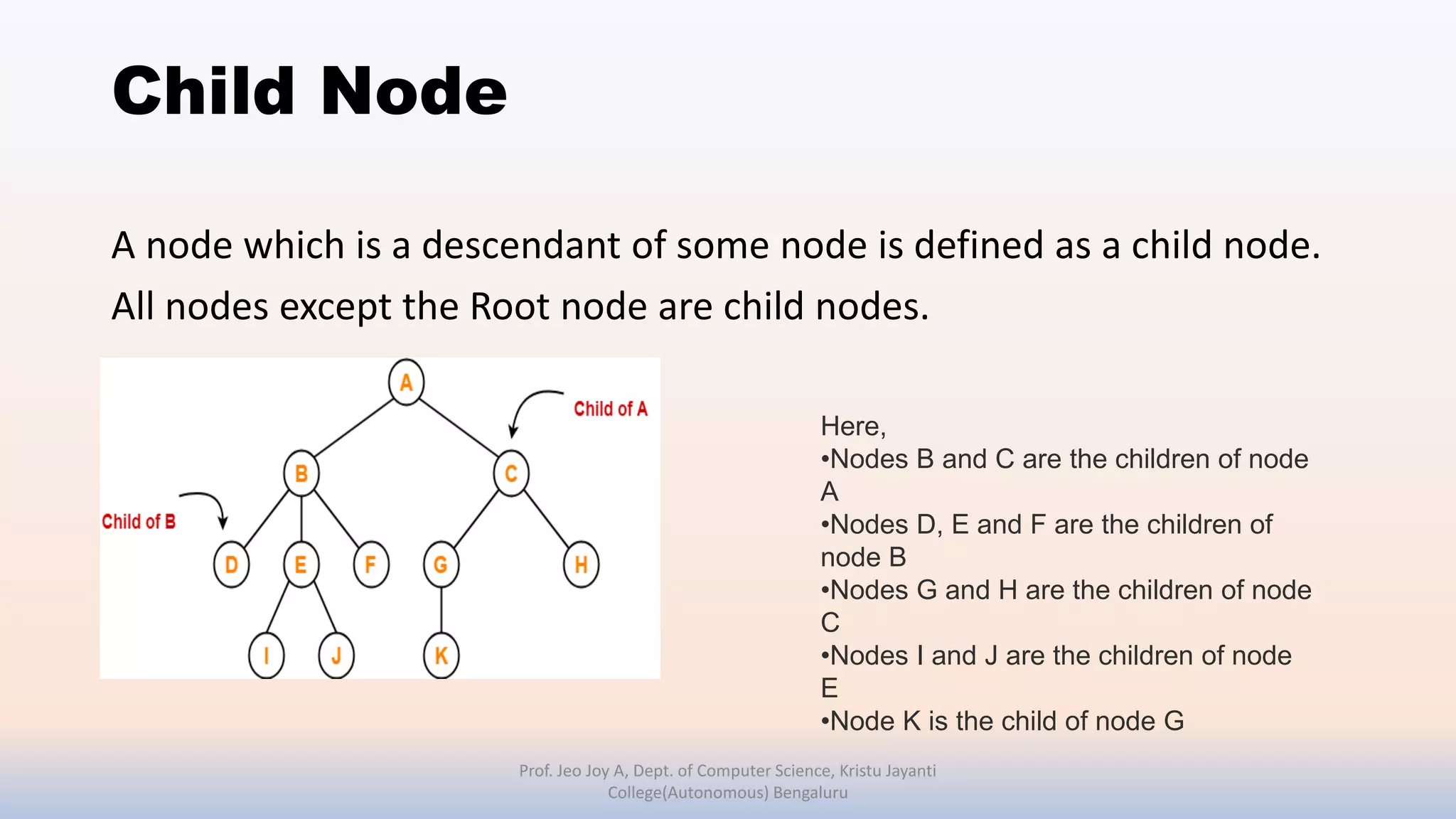
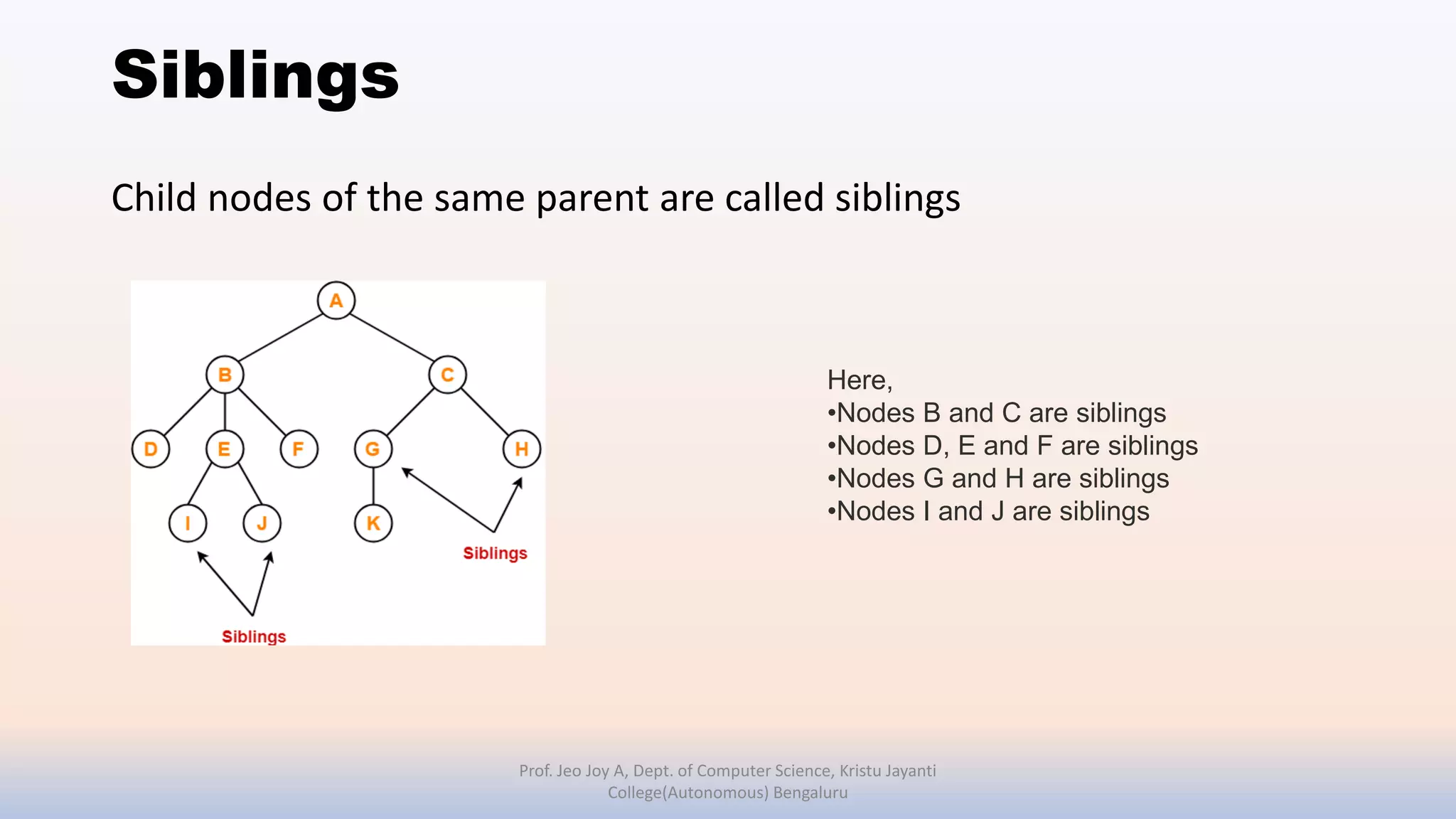
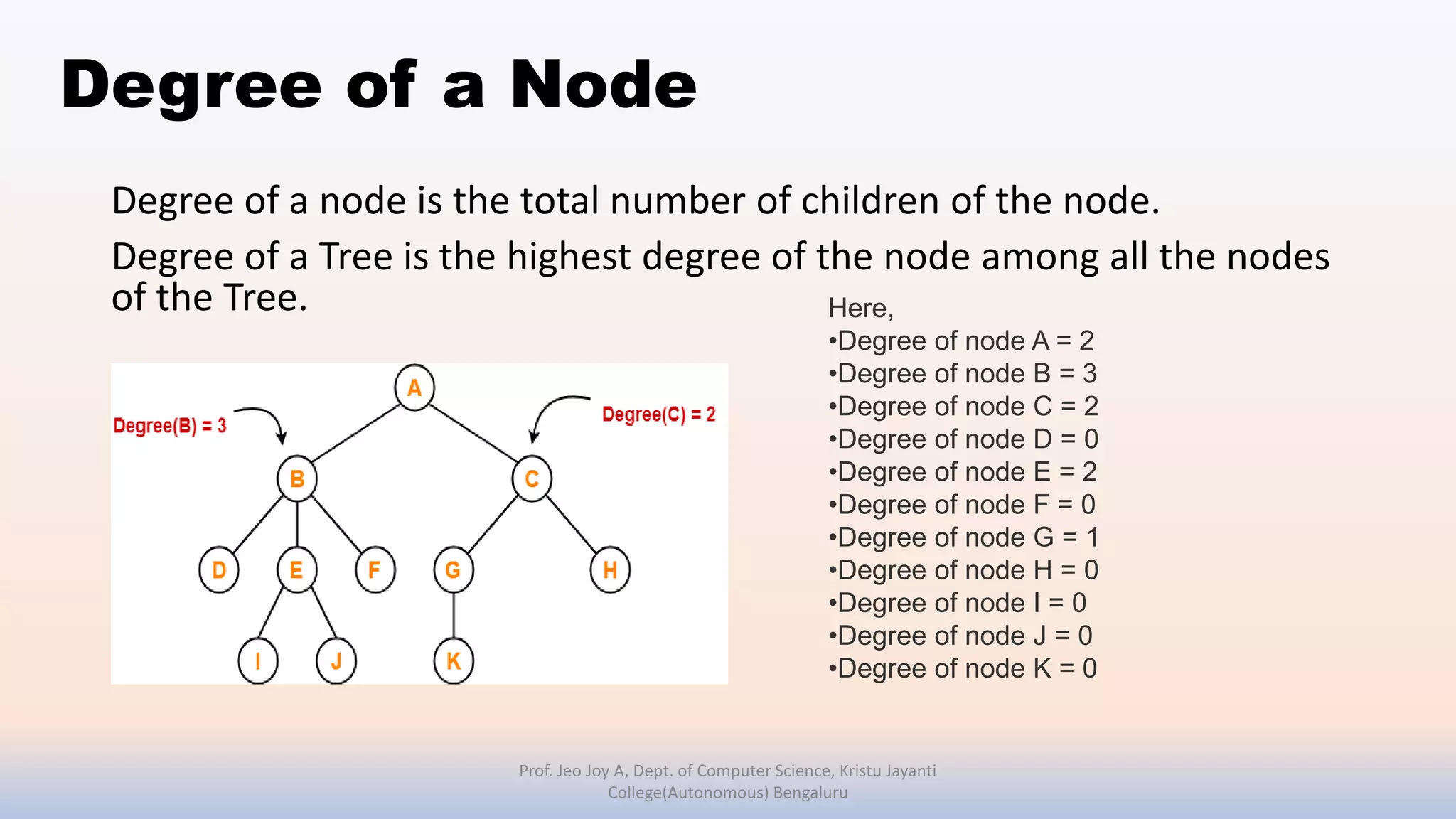
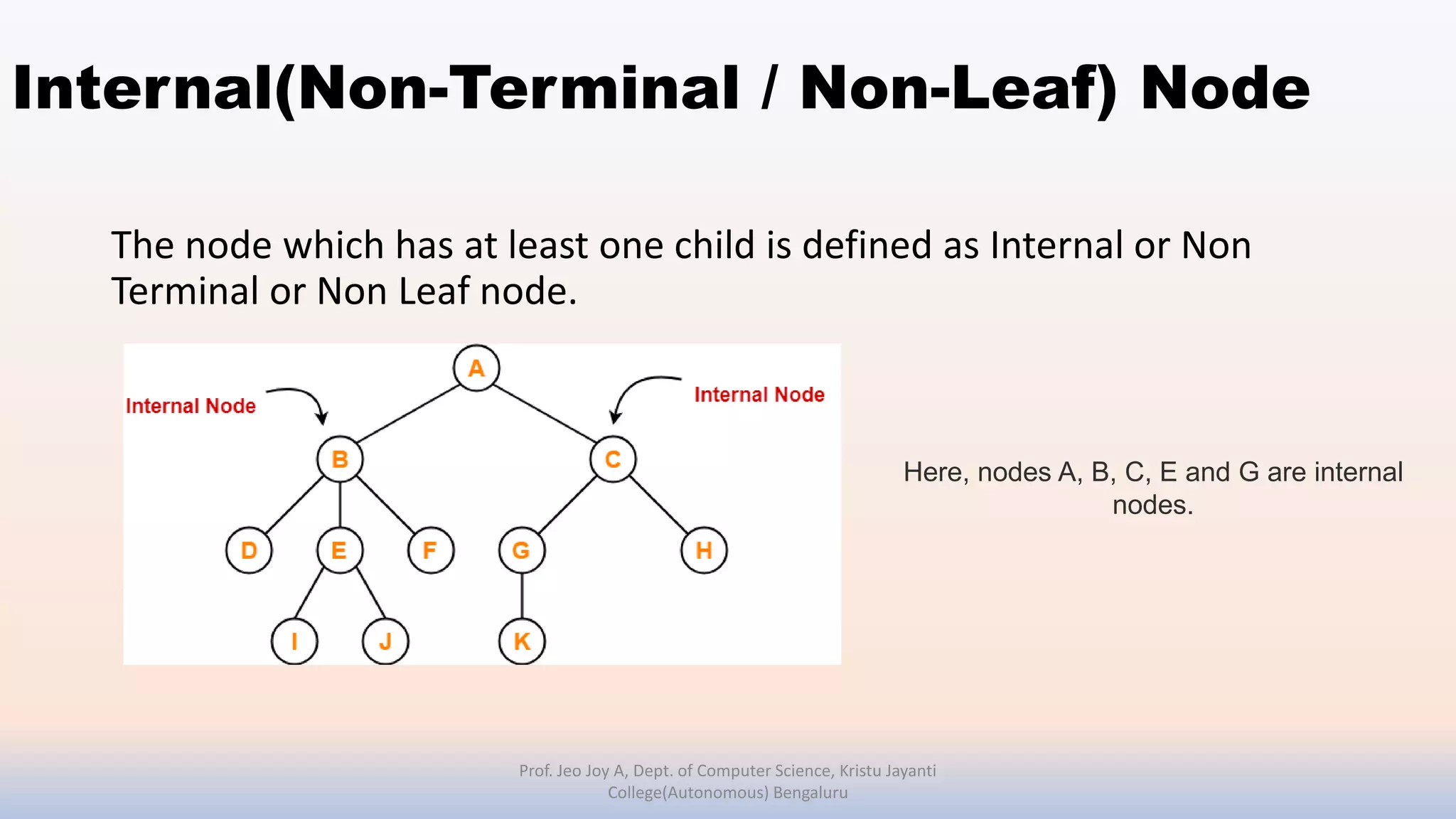

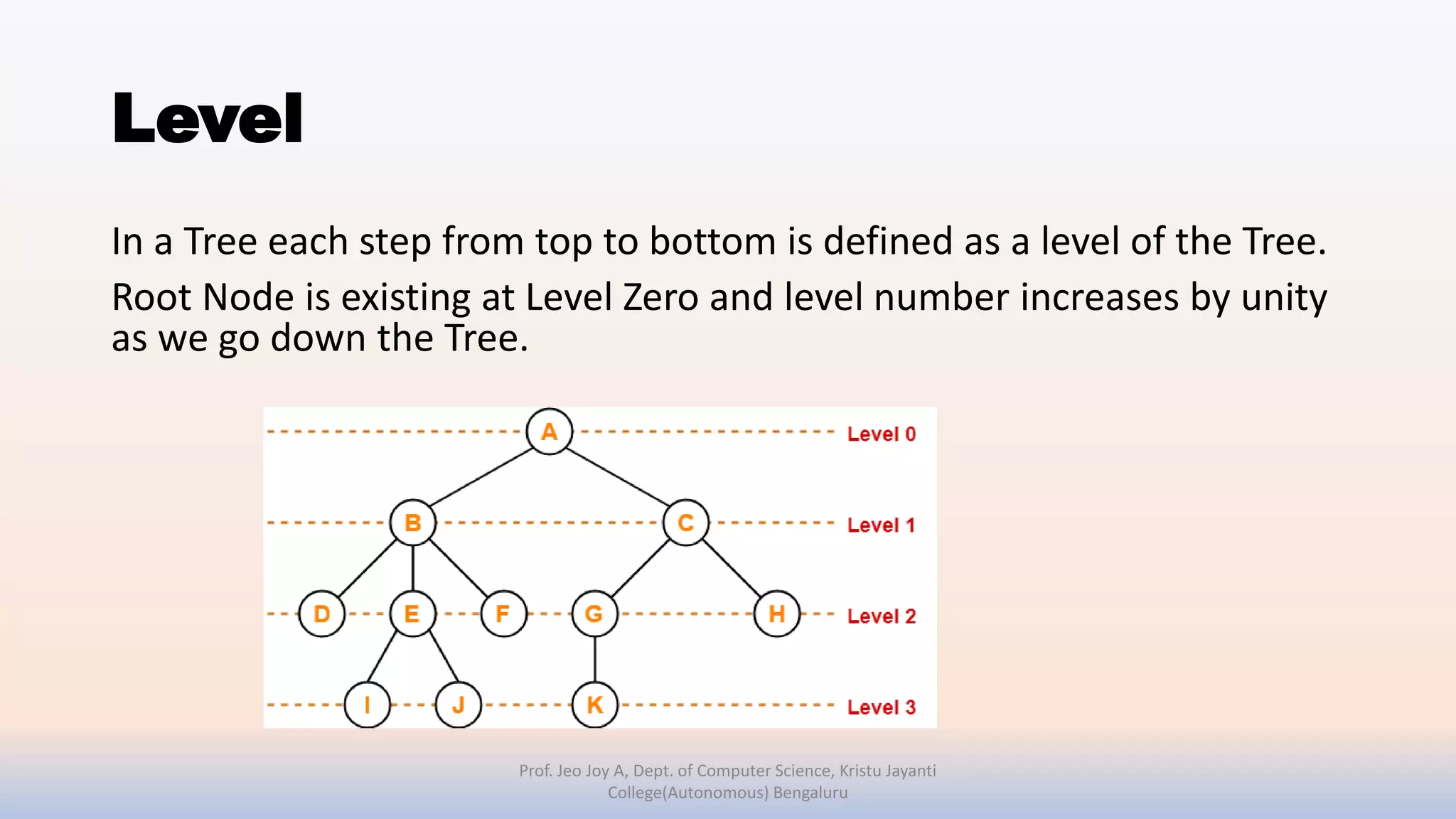
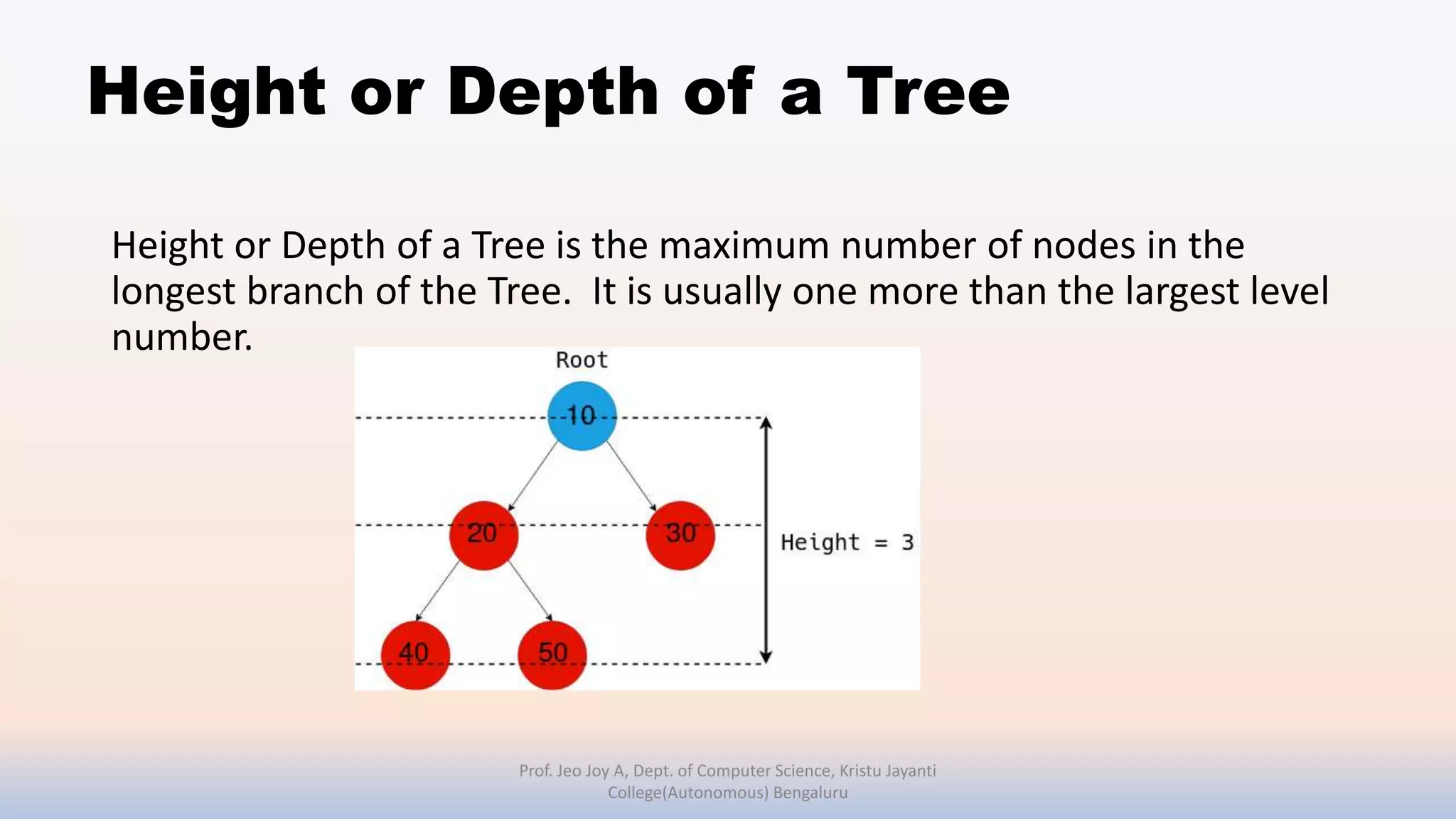
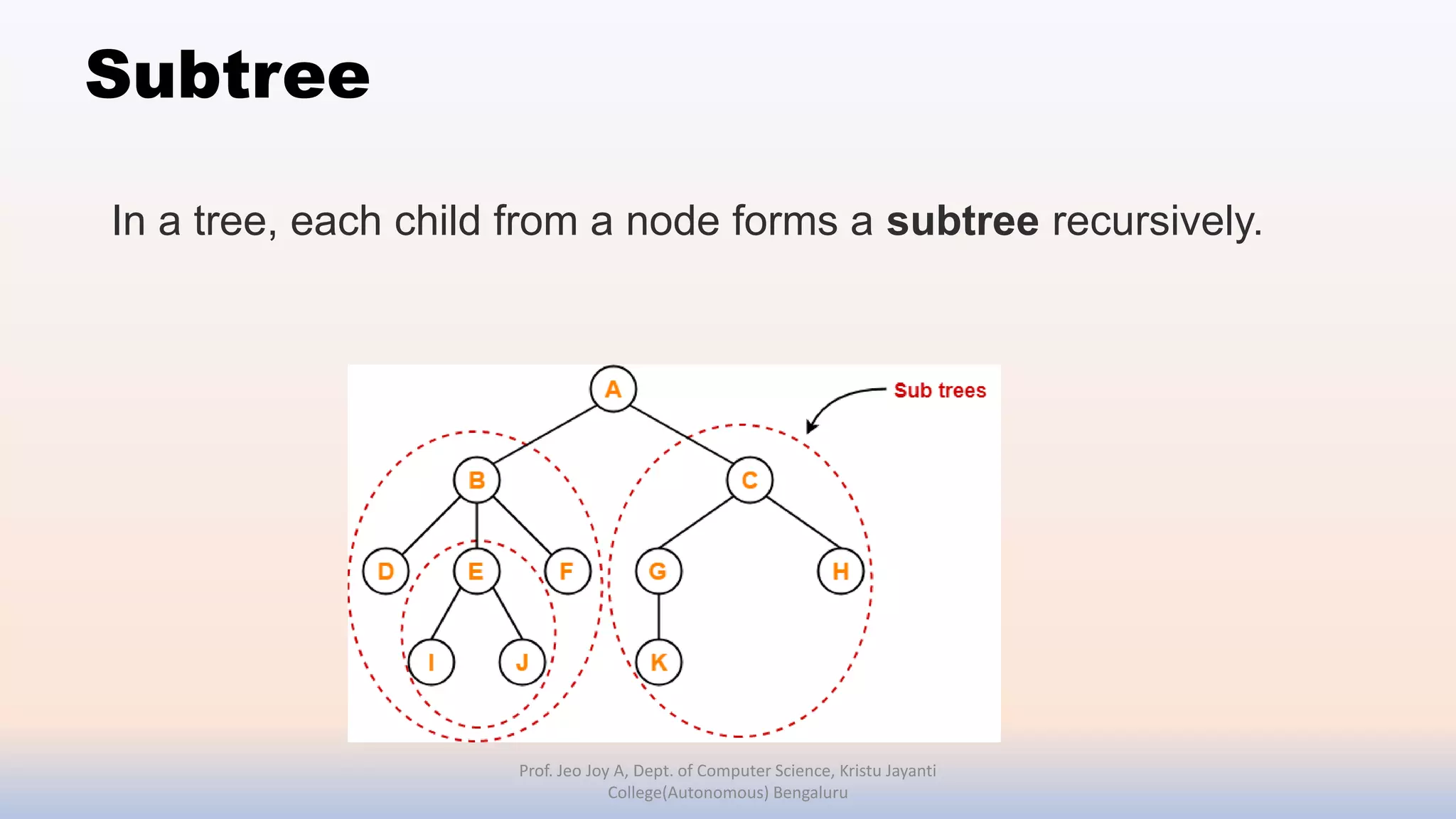

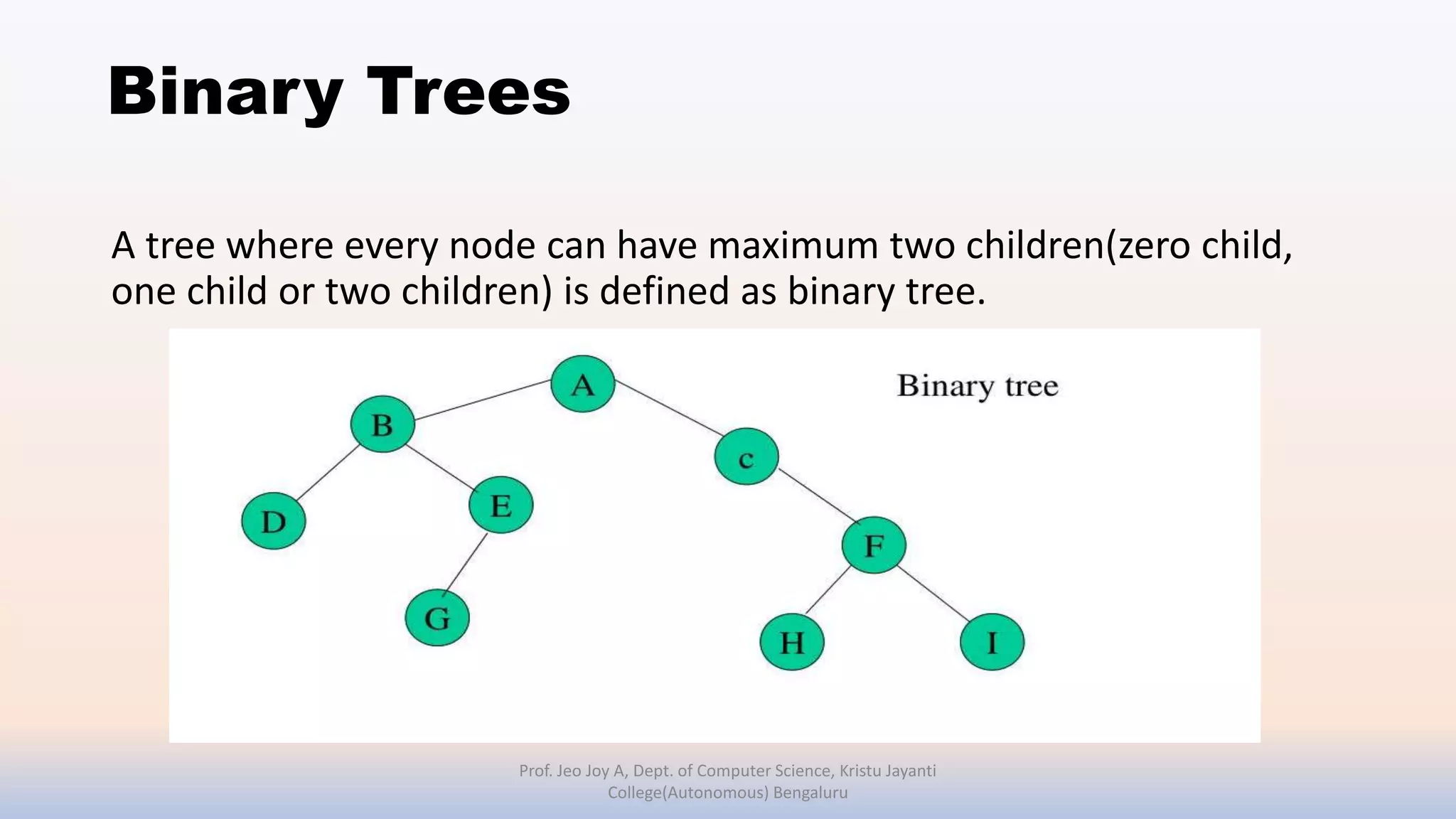
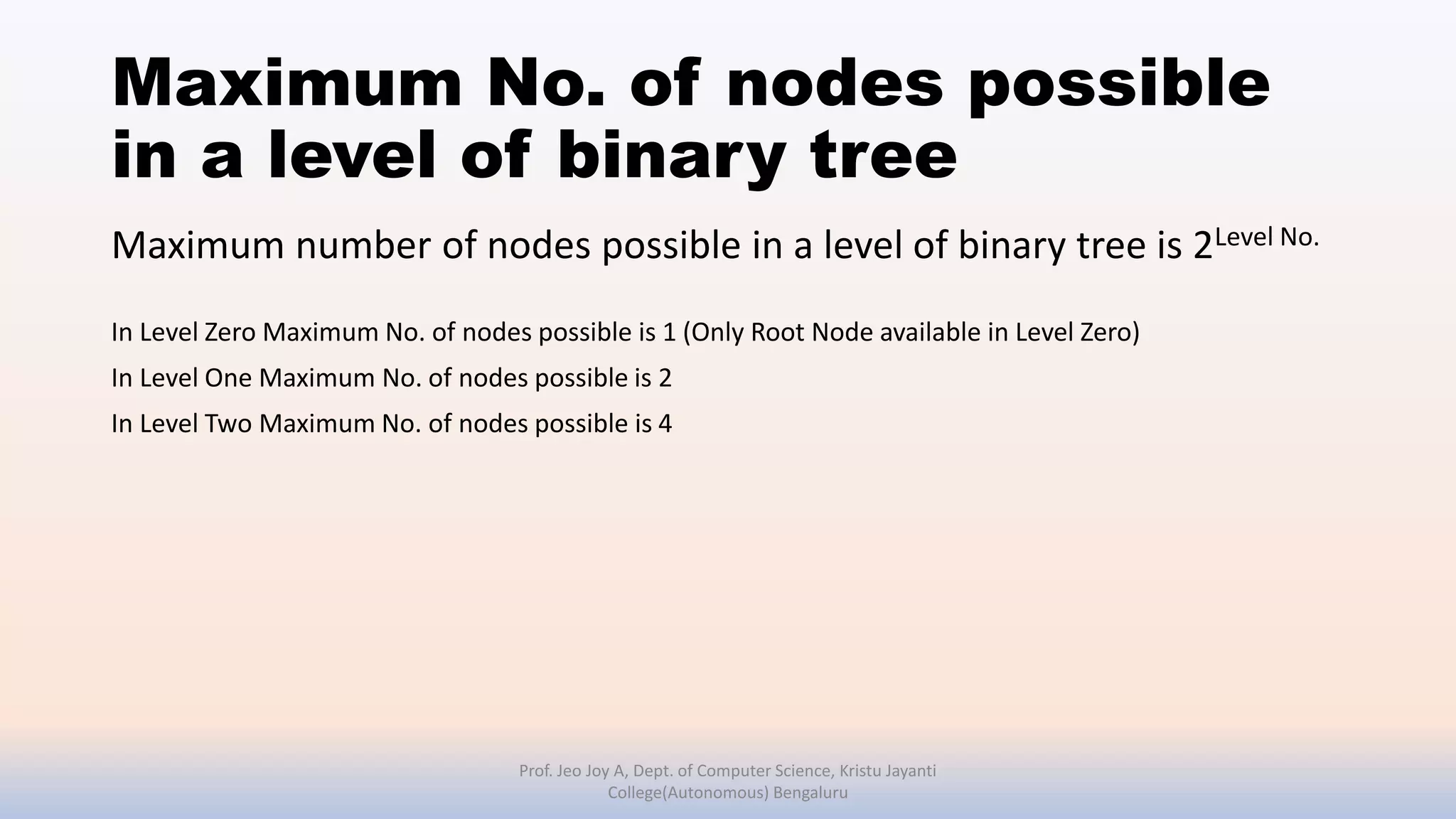

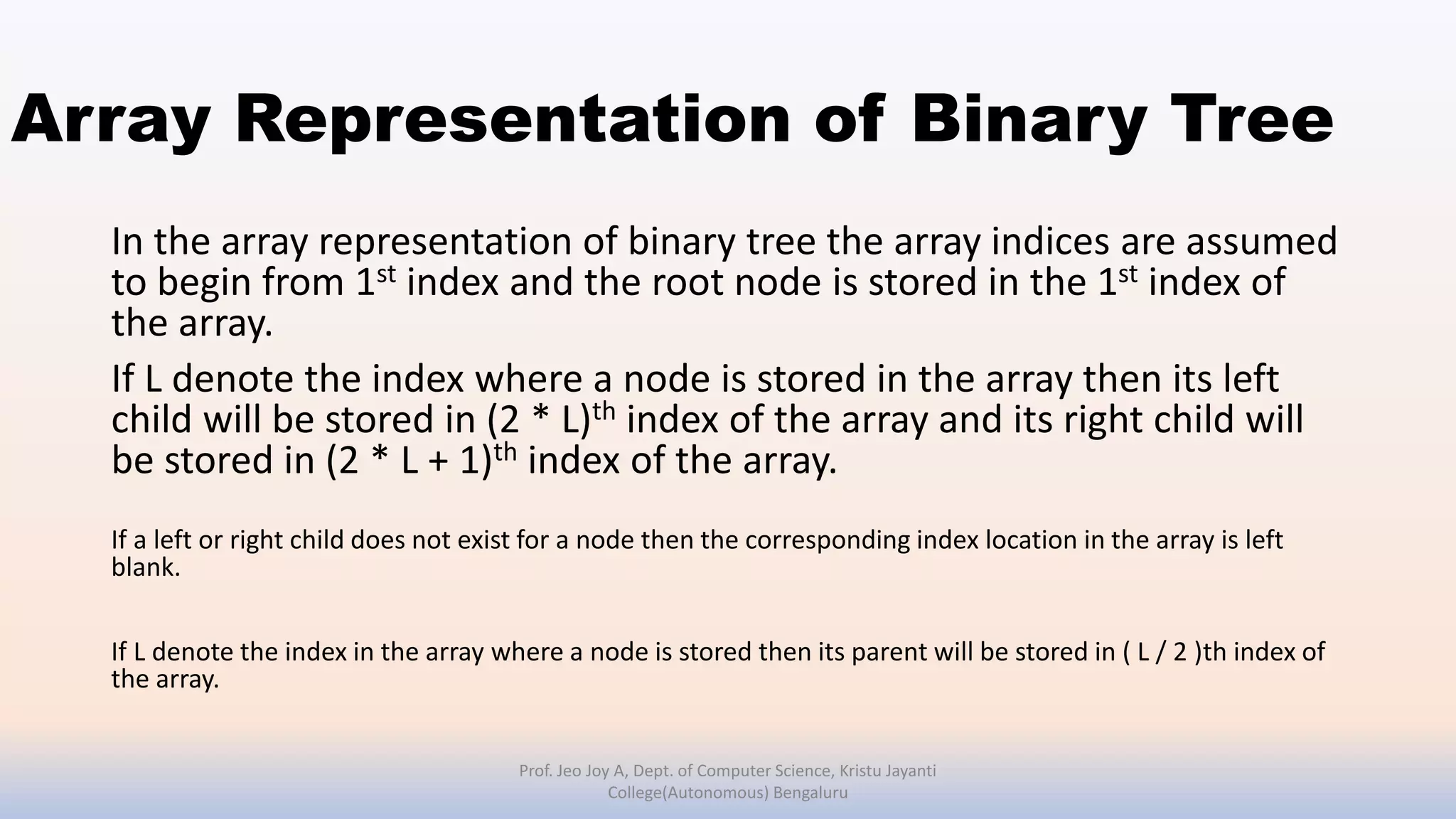
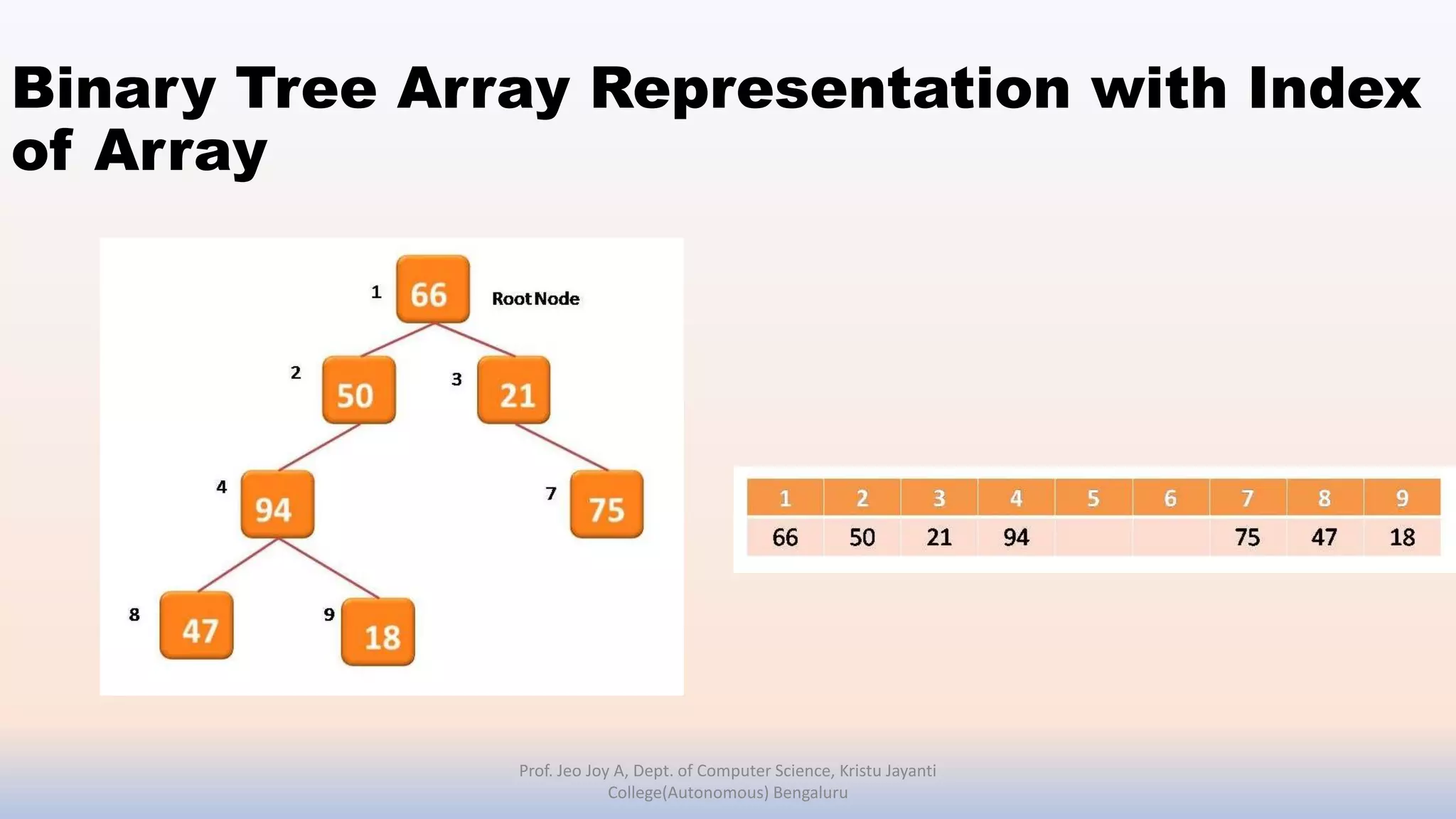
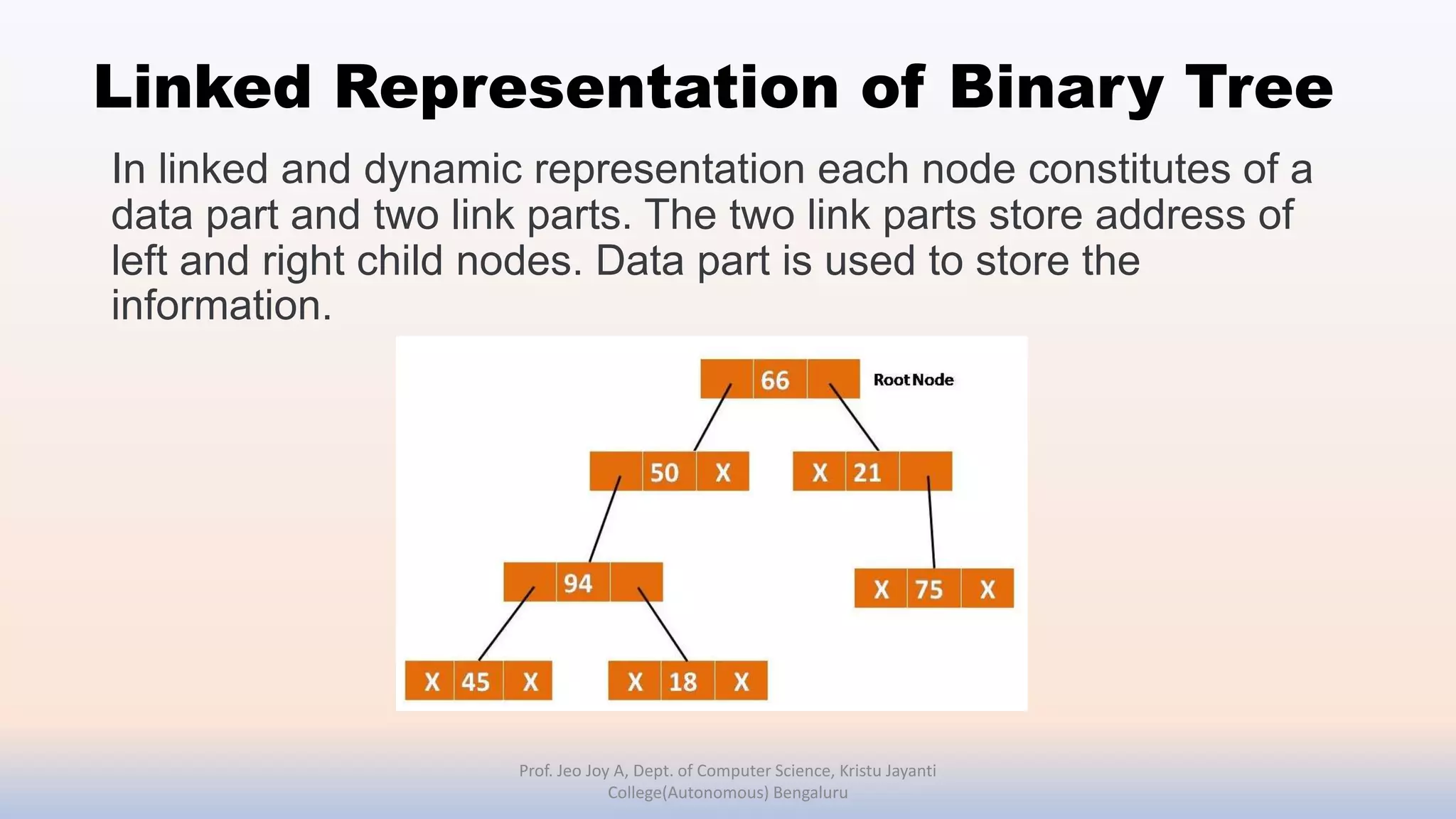
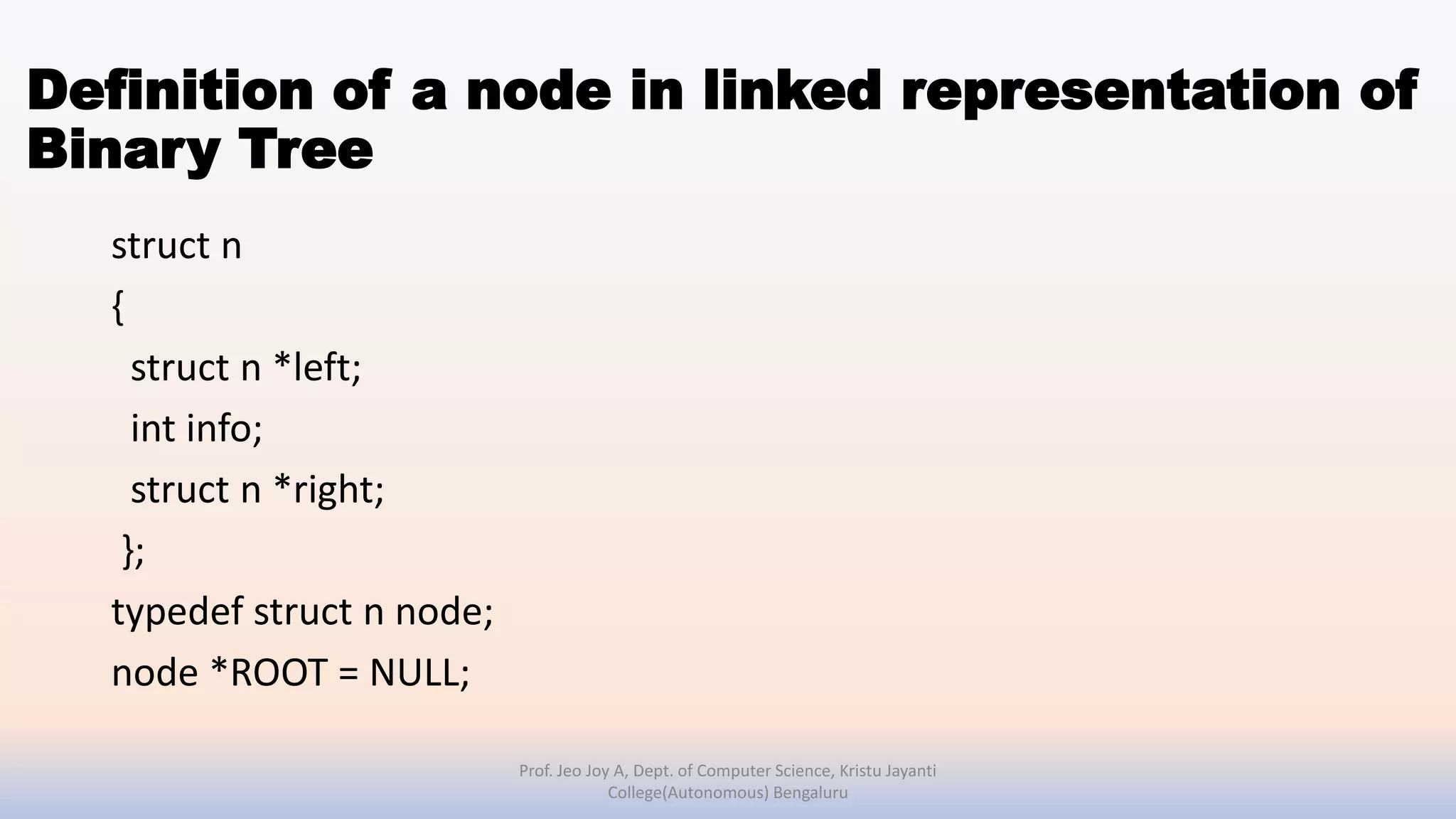
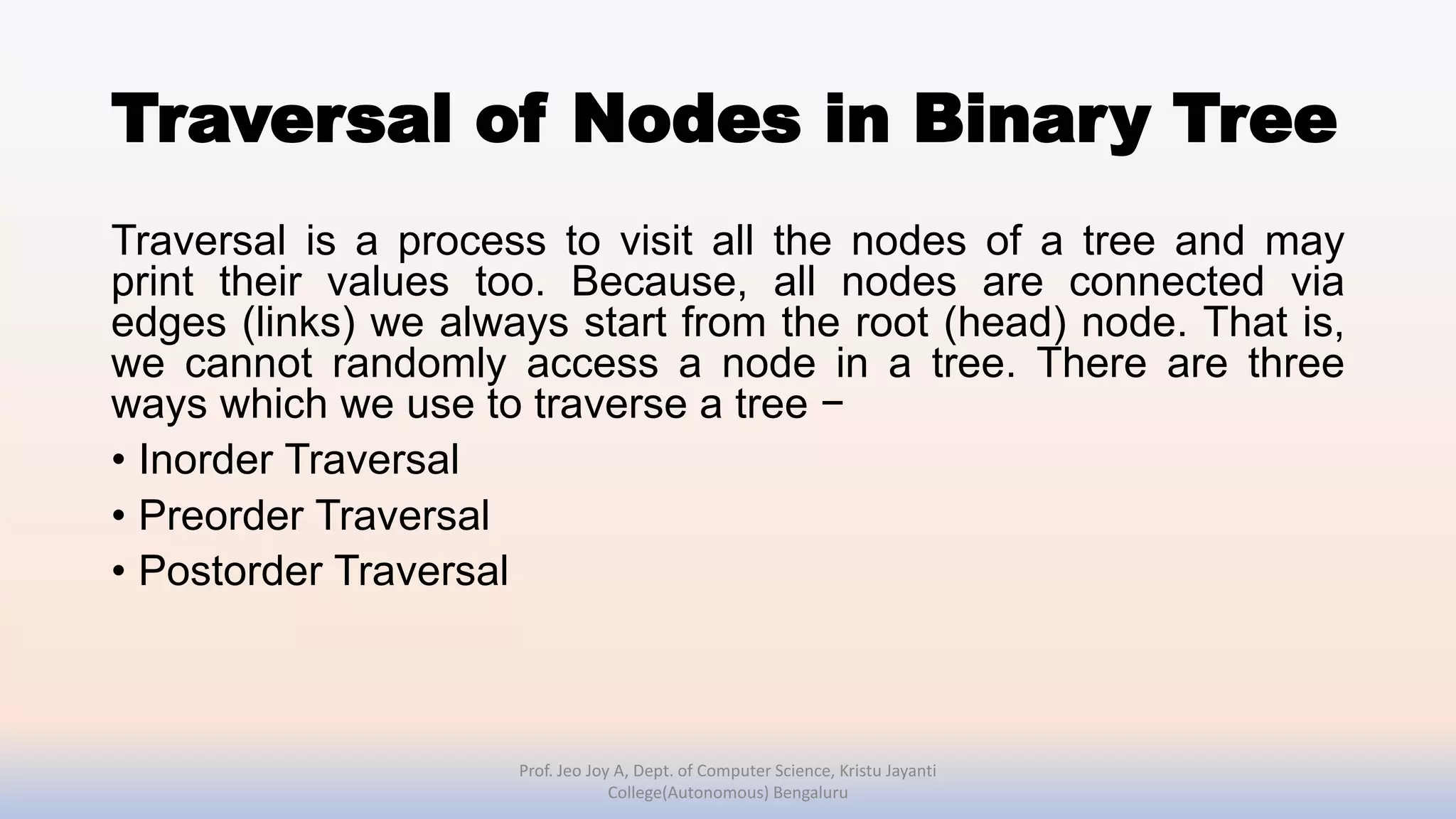
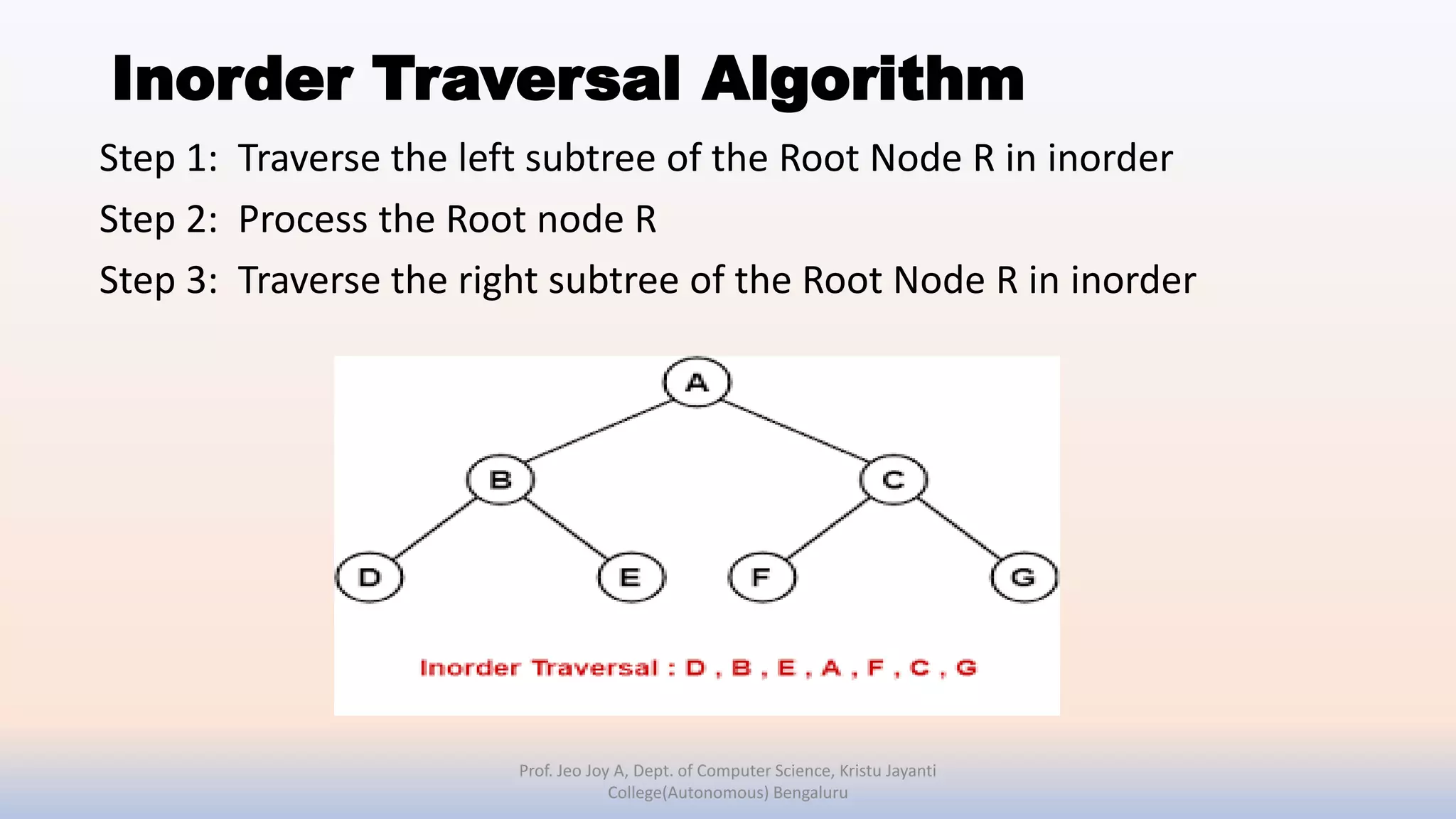
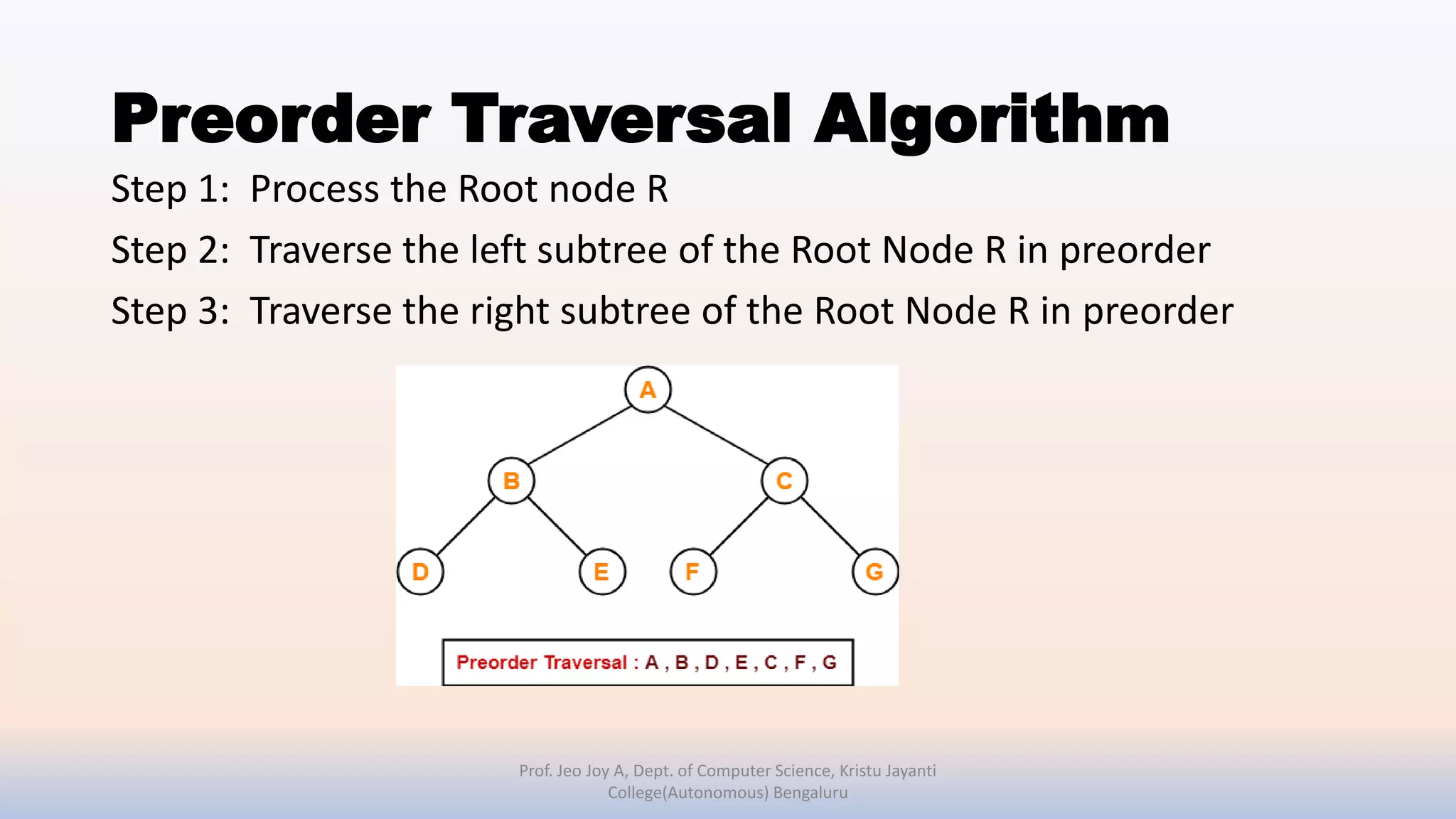
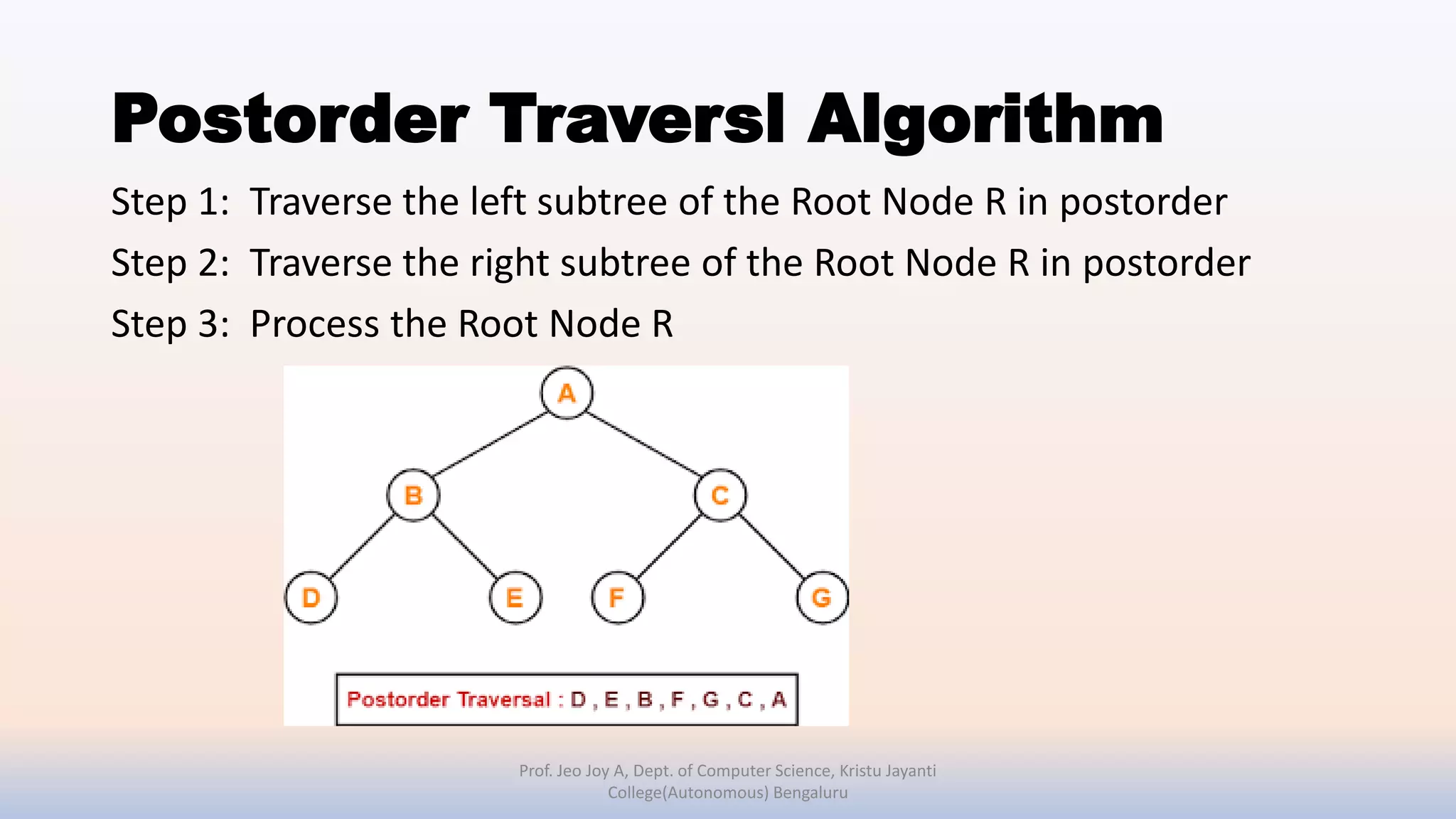
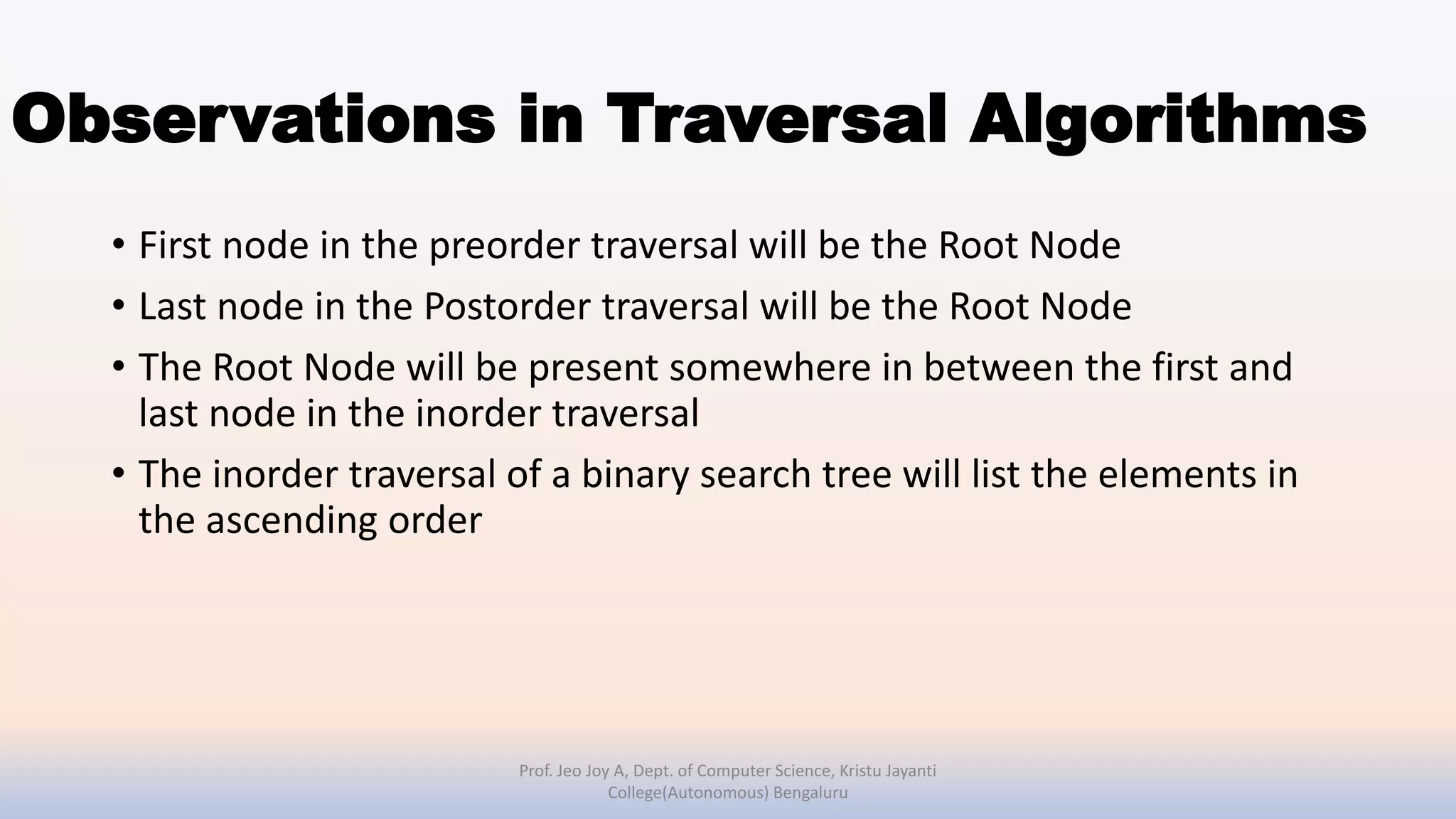
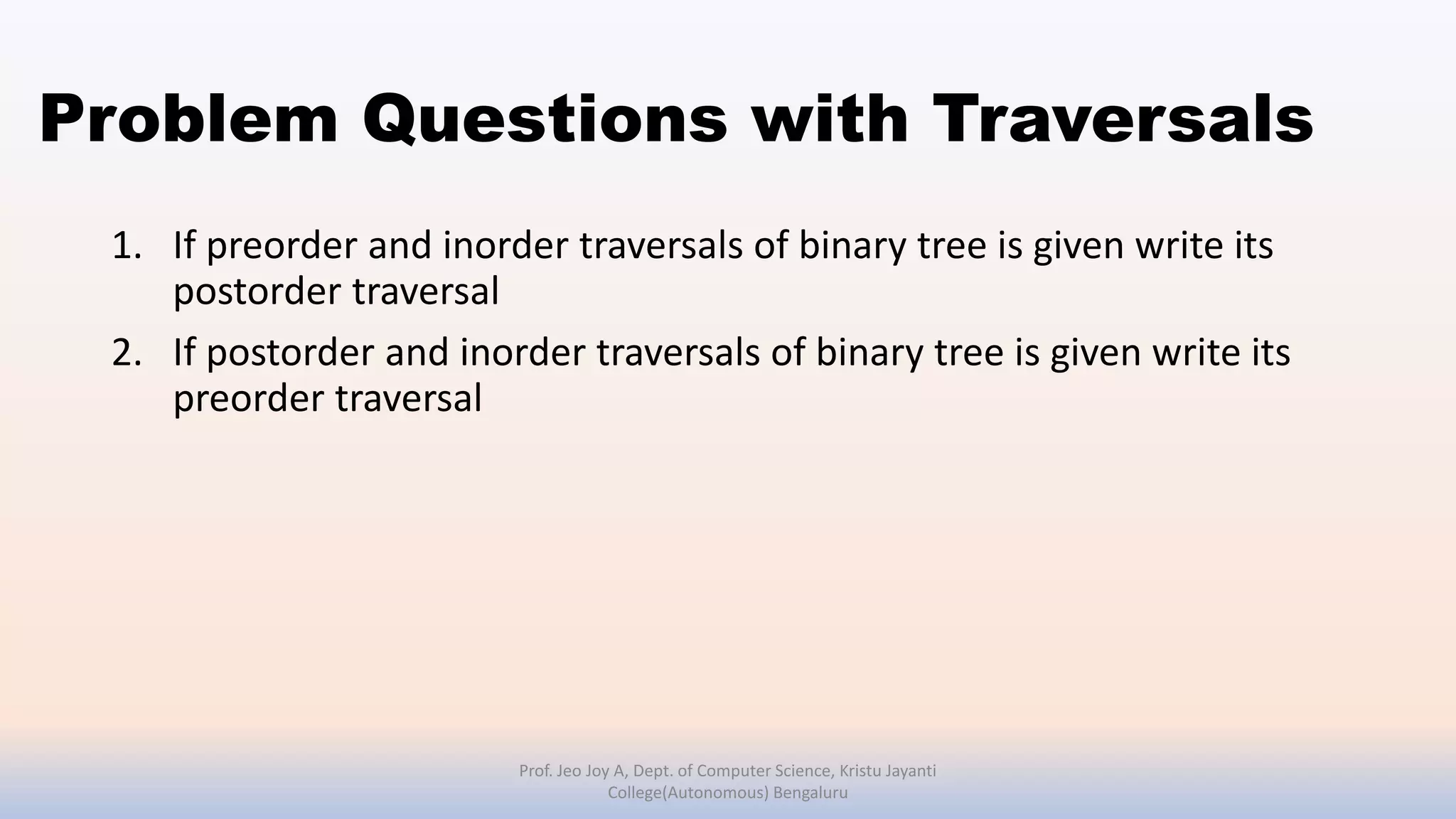

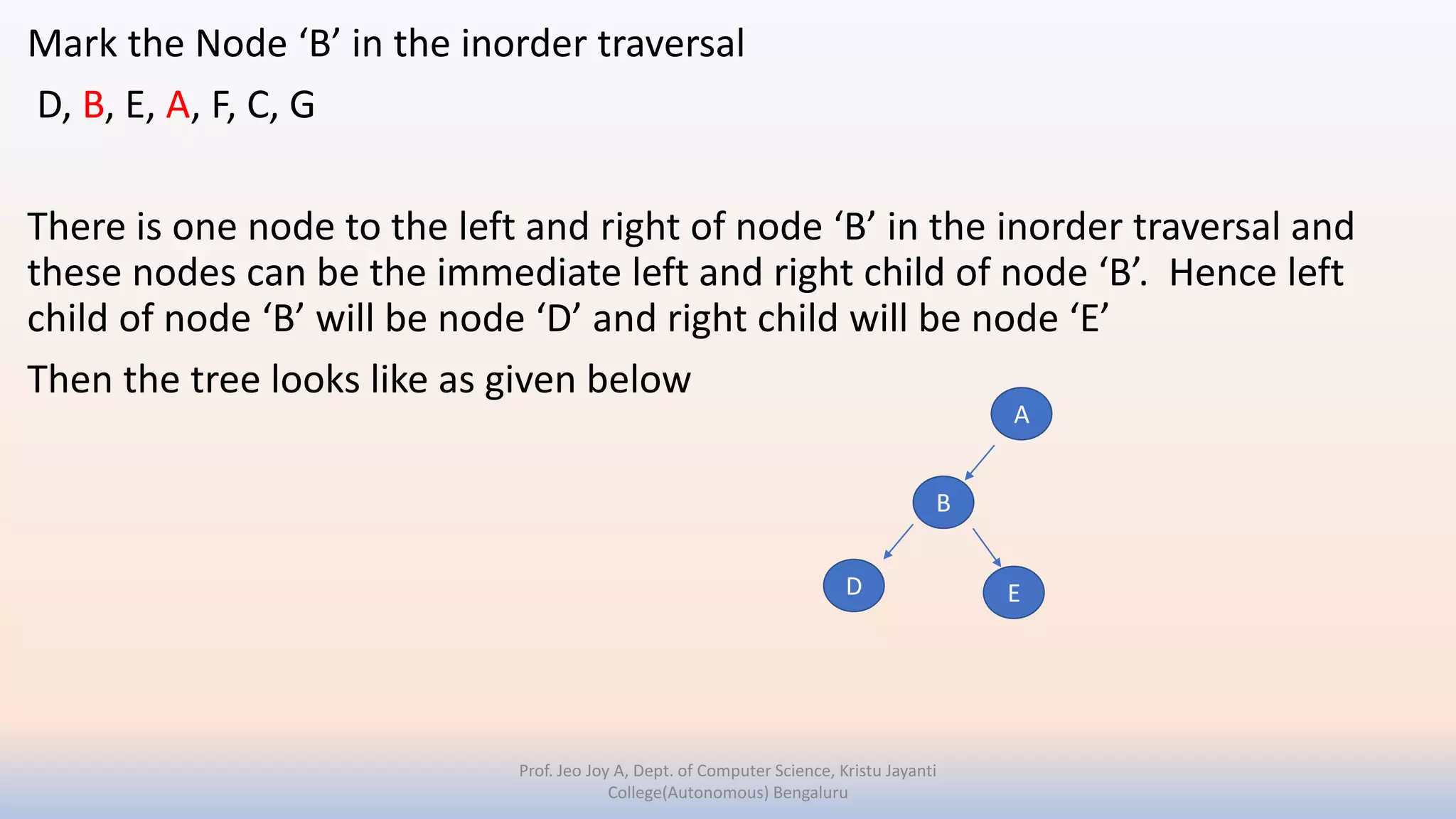
![Now we move towards the right side of node ‘A’ in the inorder traversal.
D, B, E, A, F, C, G
[Nodes which are represented in the binary tree are represented in red colour]
Among the nodes which lie towards the right side of node ‘A’ in the inorder
traversal the node which appears first in preorder traversal is node ‘C’. Hence
node ‘C’ will be added as immediate right child of node ‘A’
Prof. Jeo Joy A, Dept. of Computer Science, Kristu Jayanti
College(Autonomous) Bengaluru
A
B
D E
C](https://image.slidesharecdn.com/tree-220624121455-74bc06bc/75/Tree-pptx-31-2048.jpg)
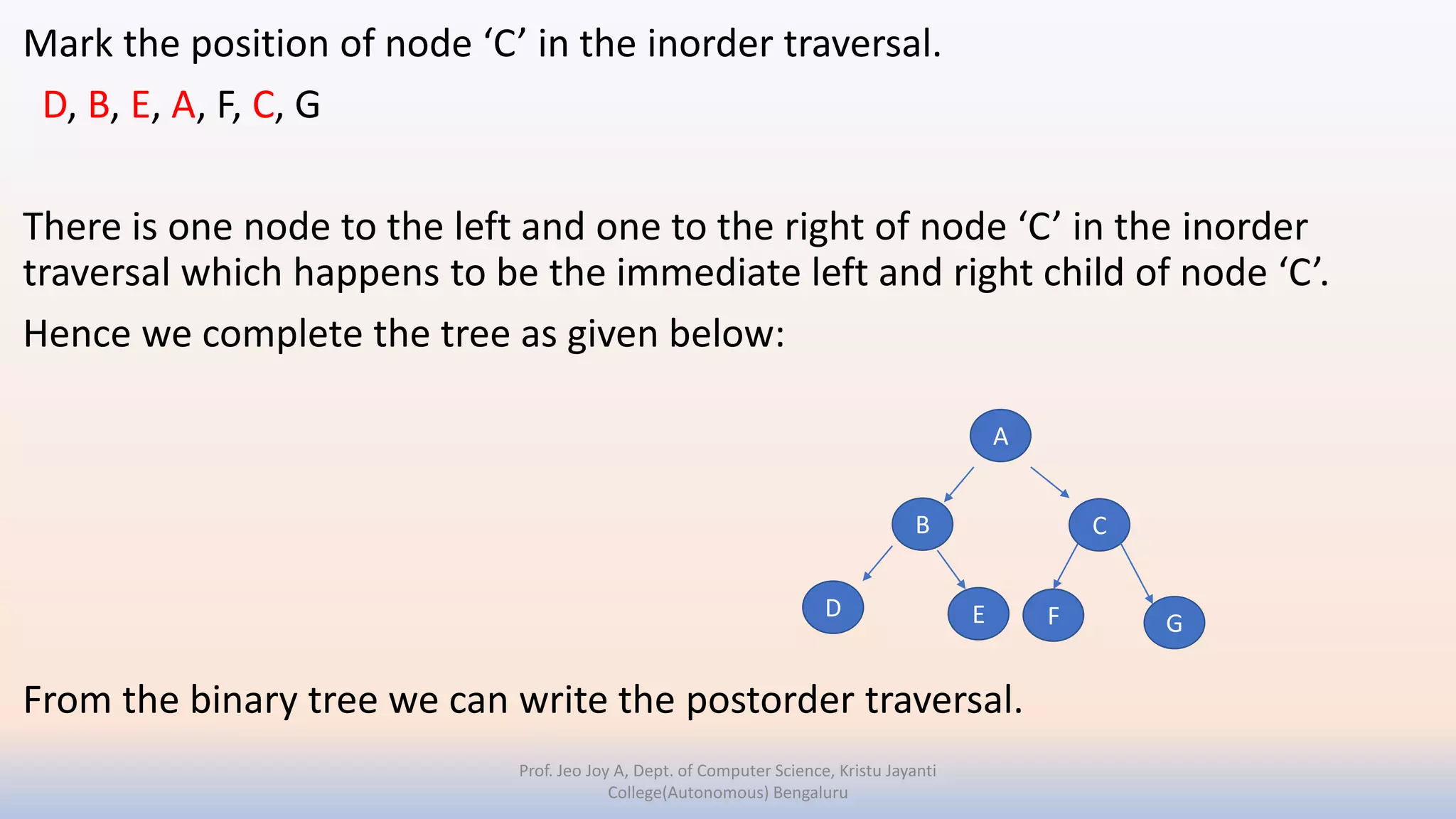
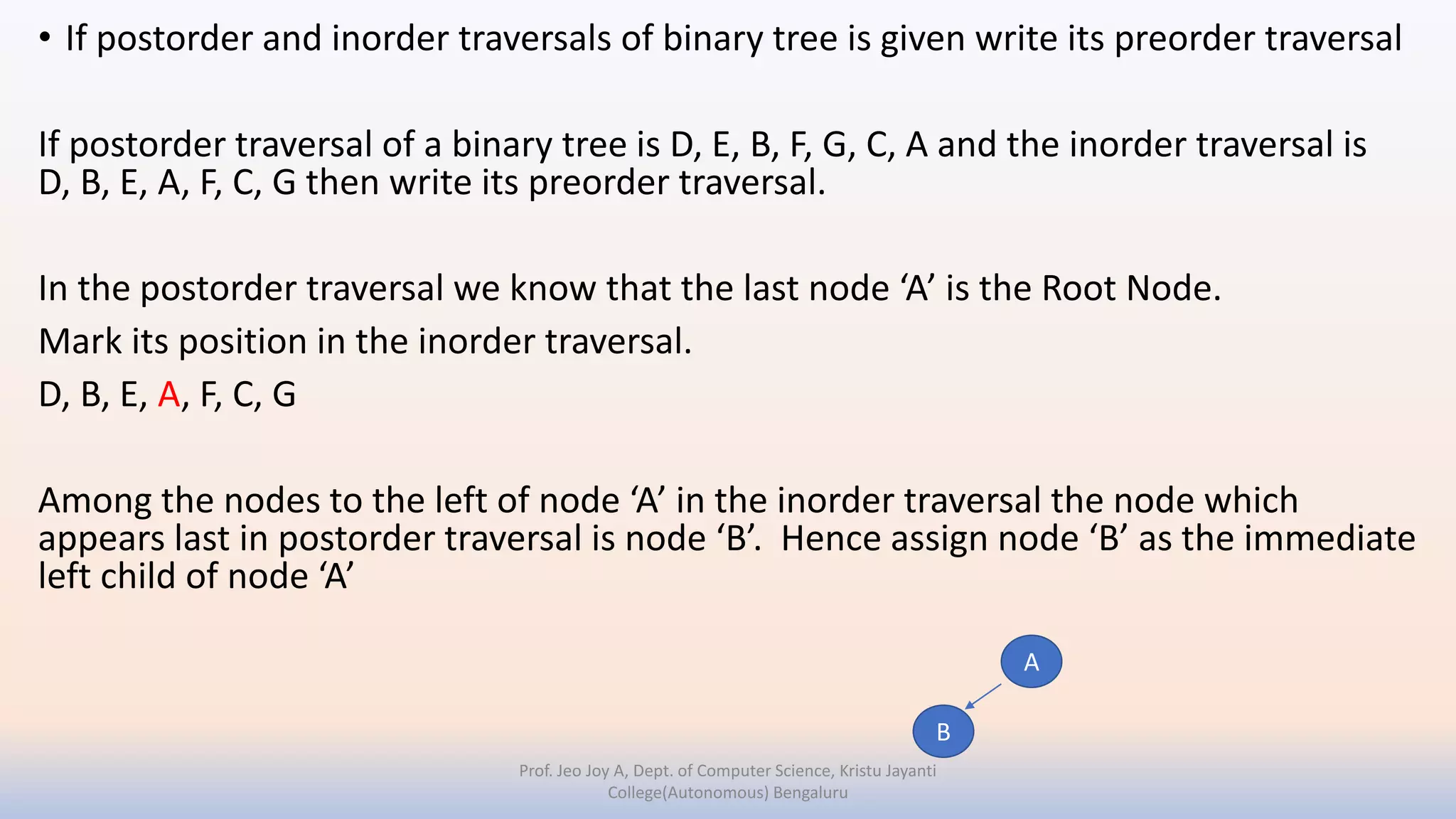
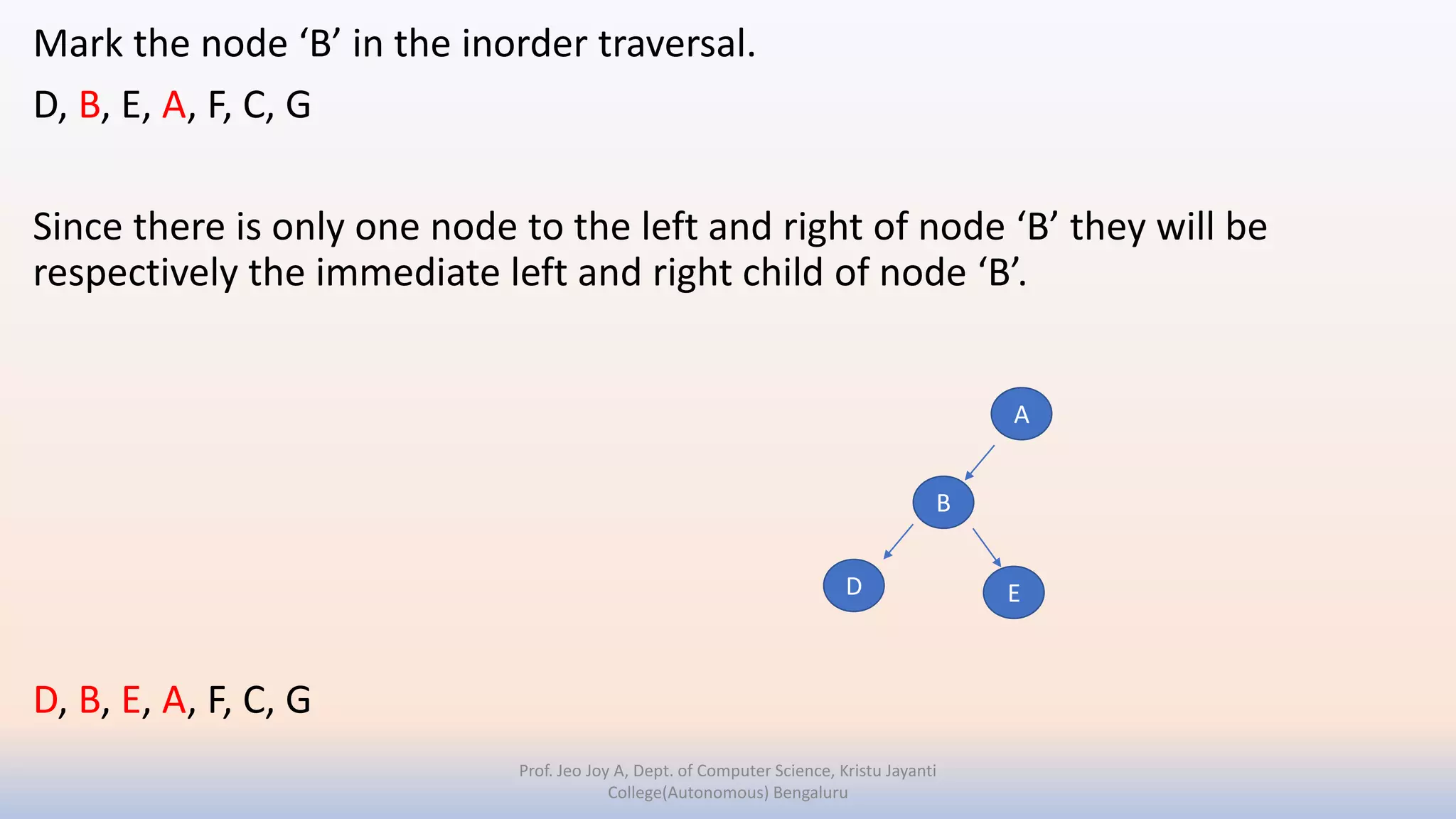

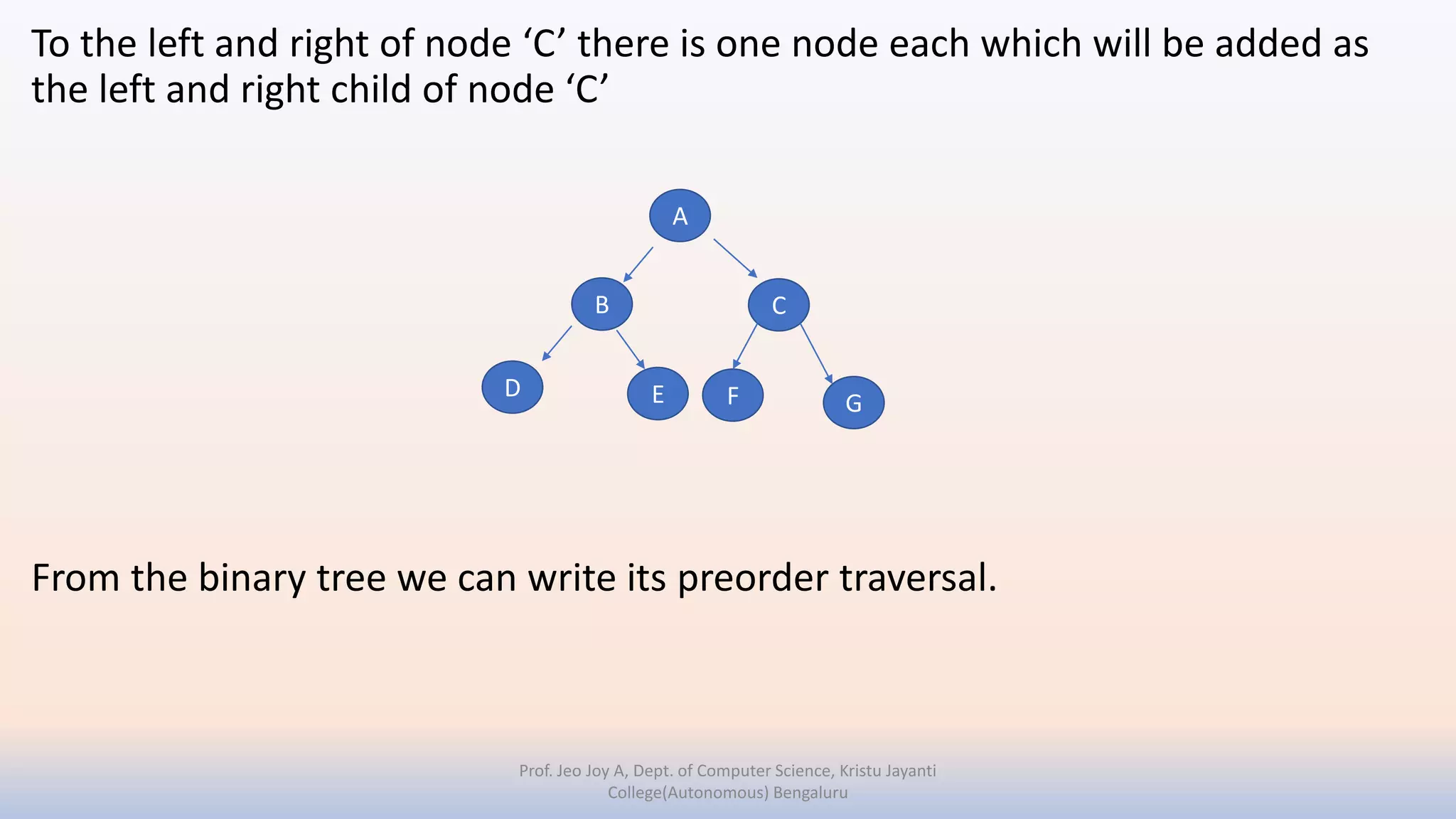
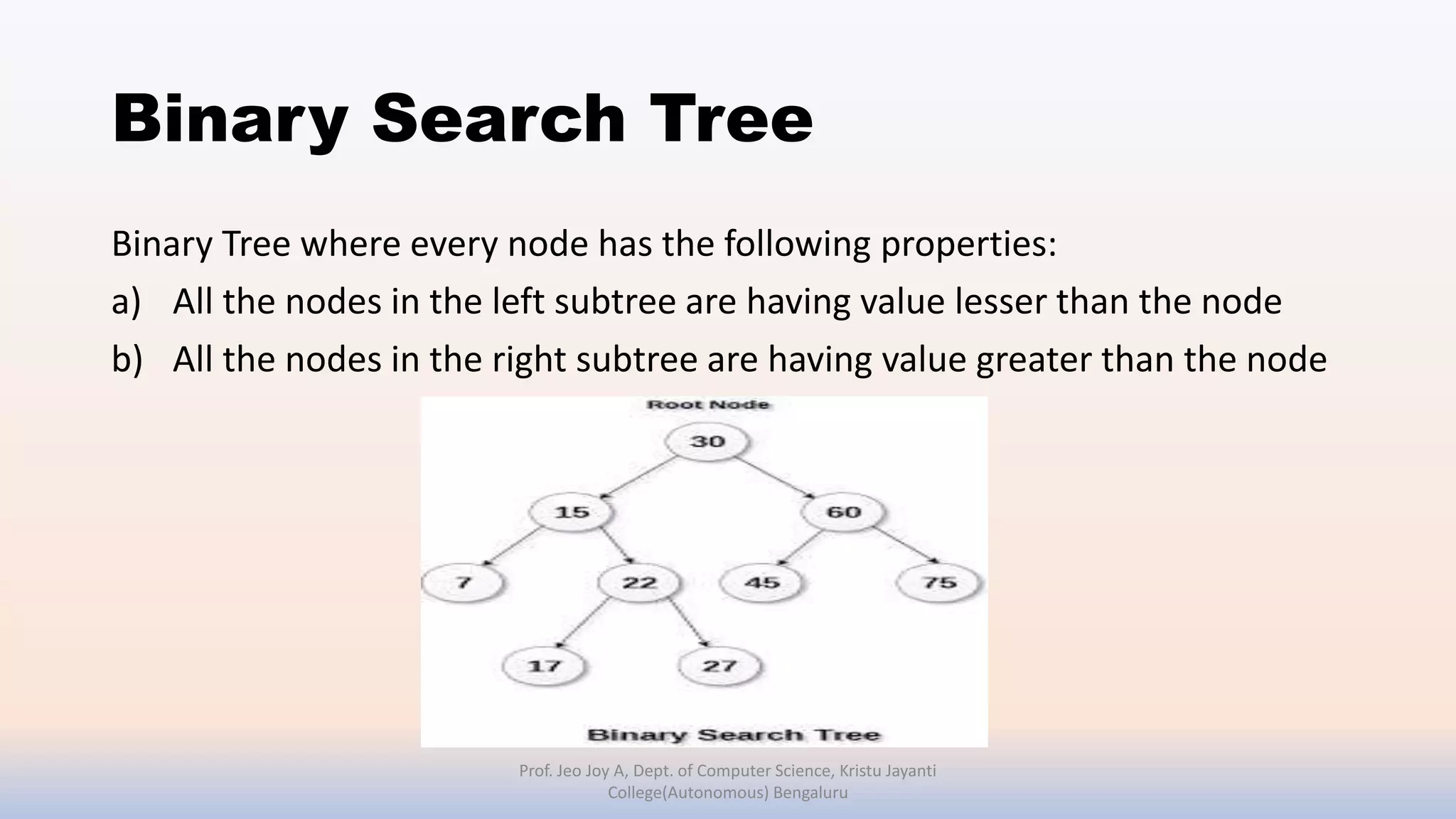
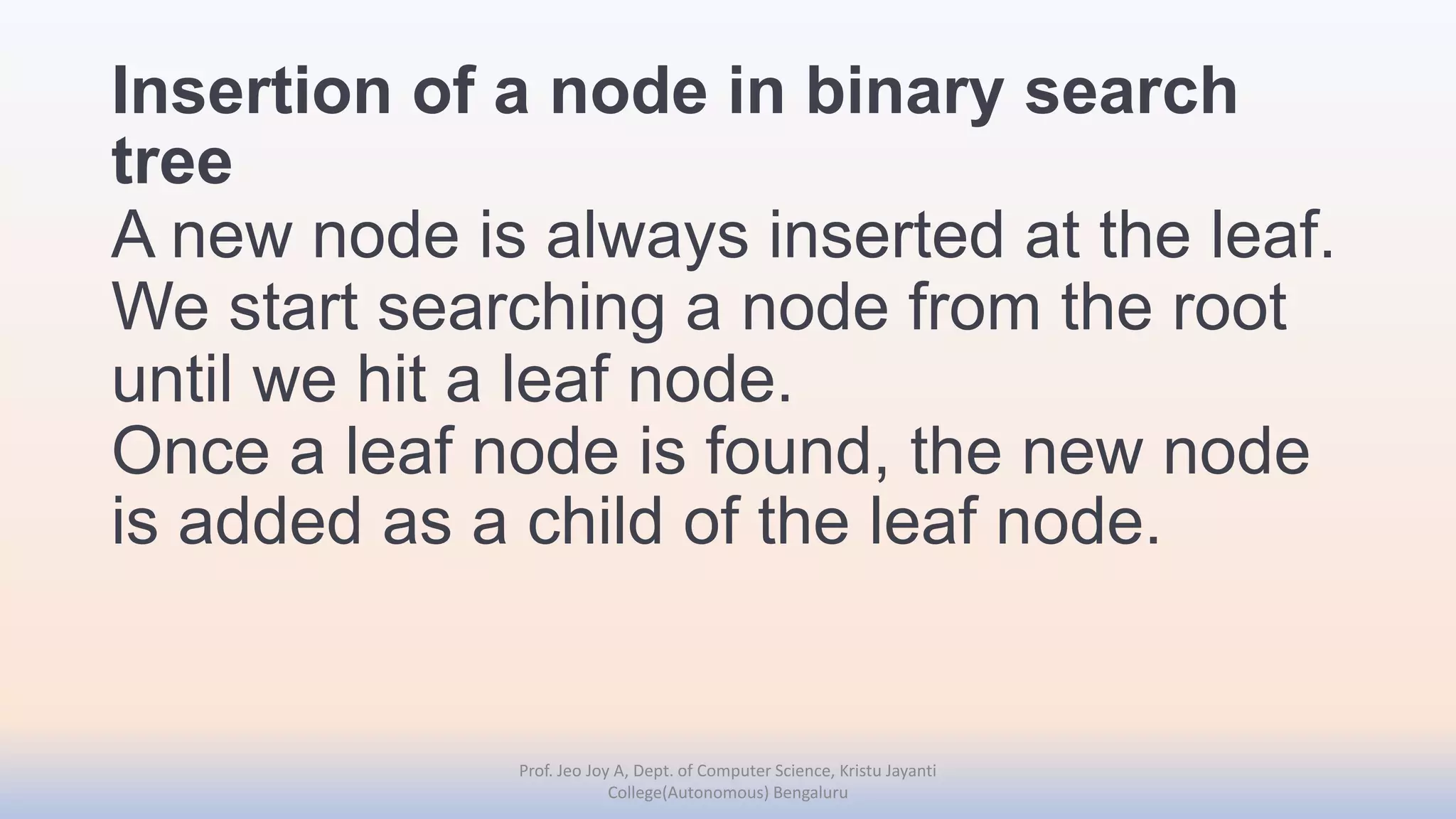
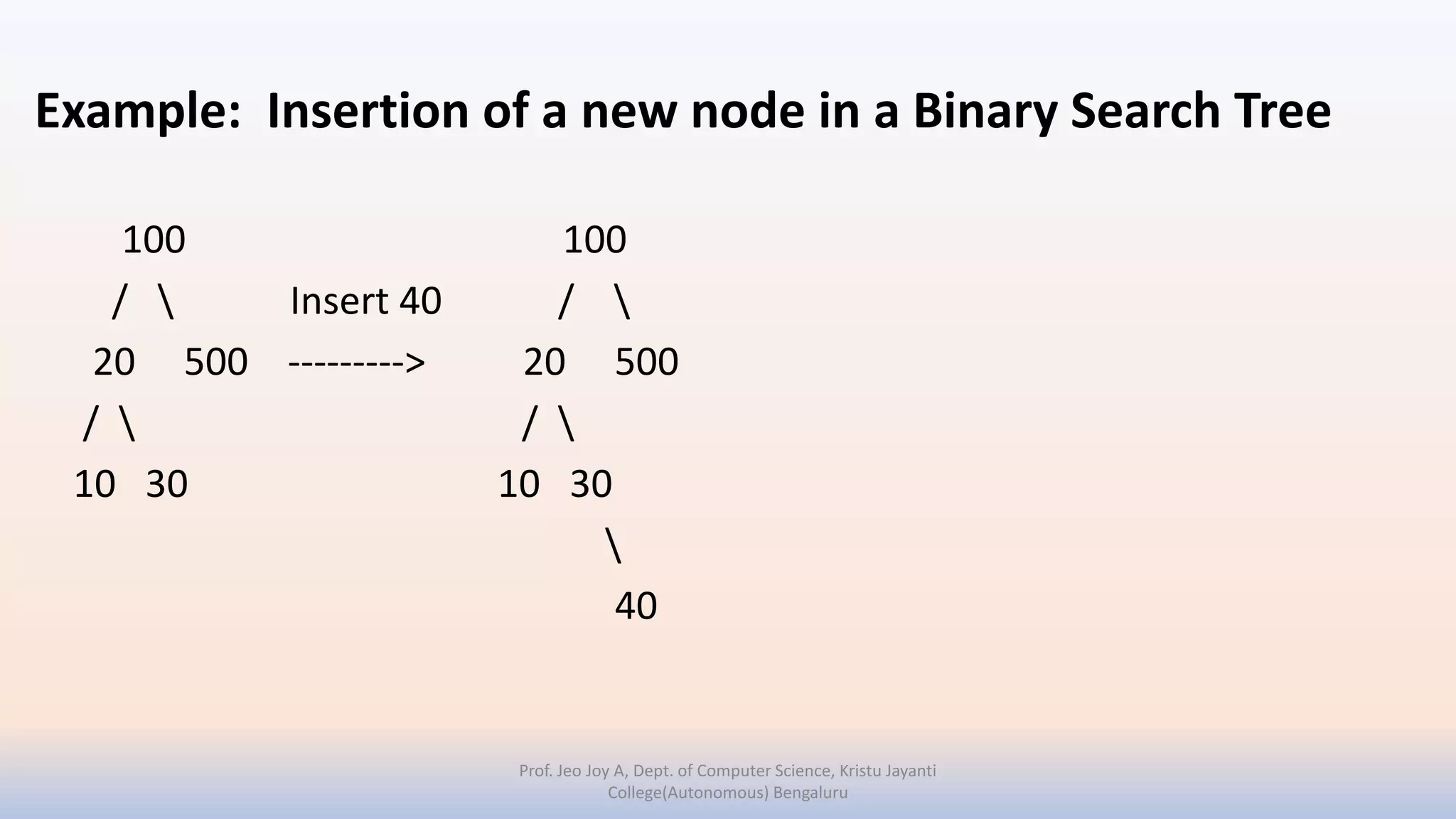
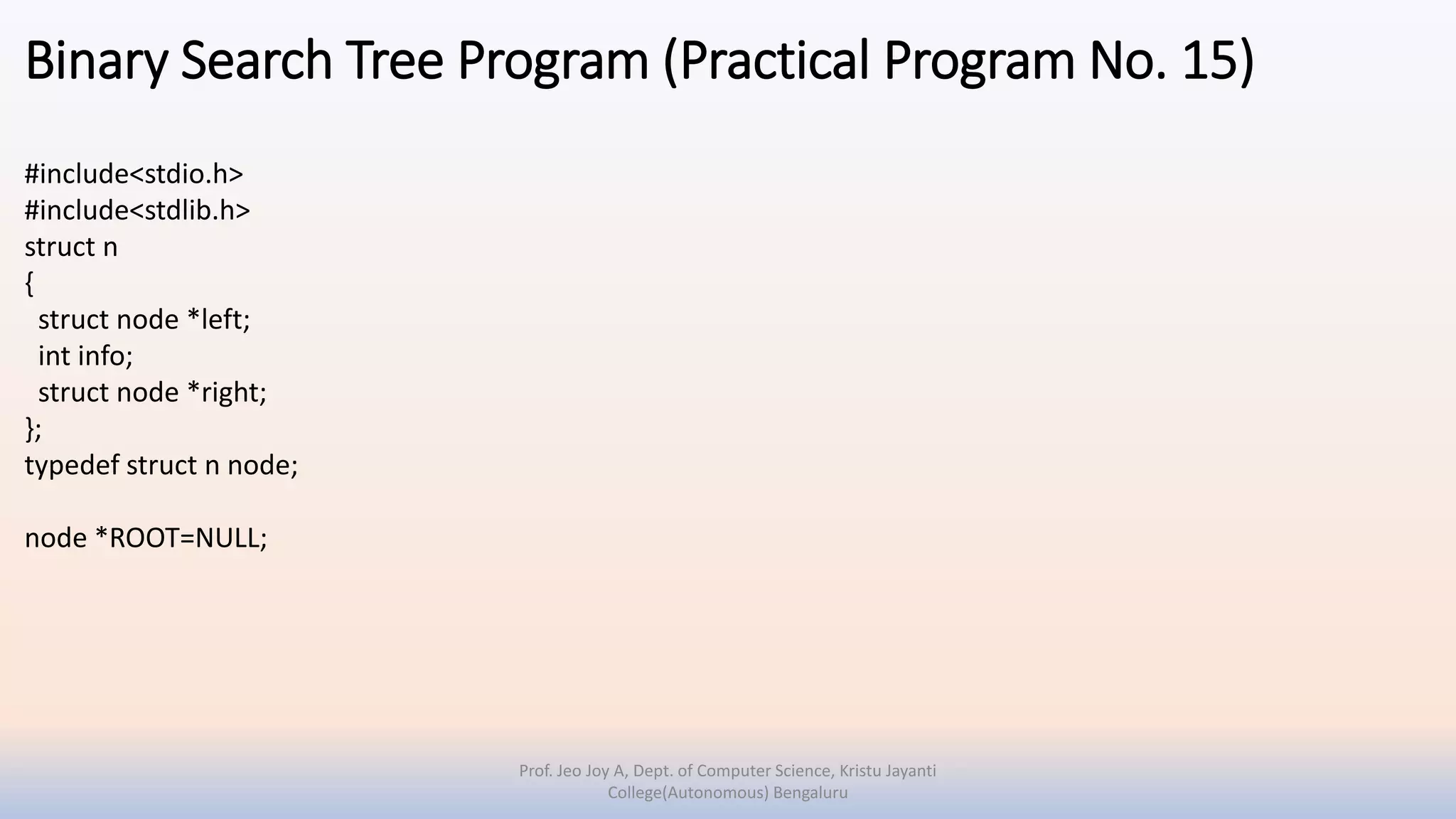
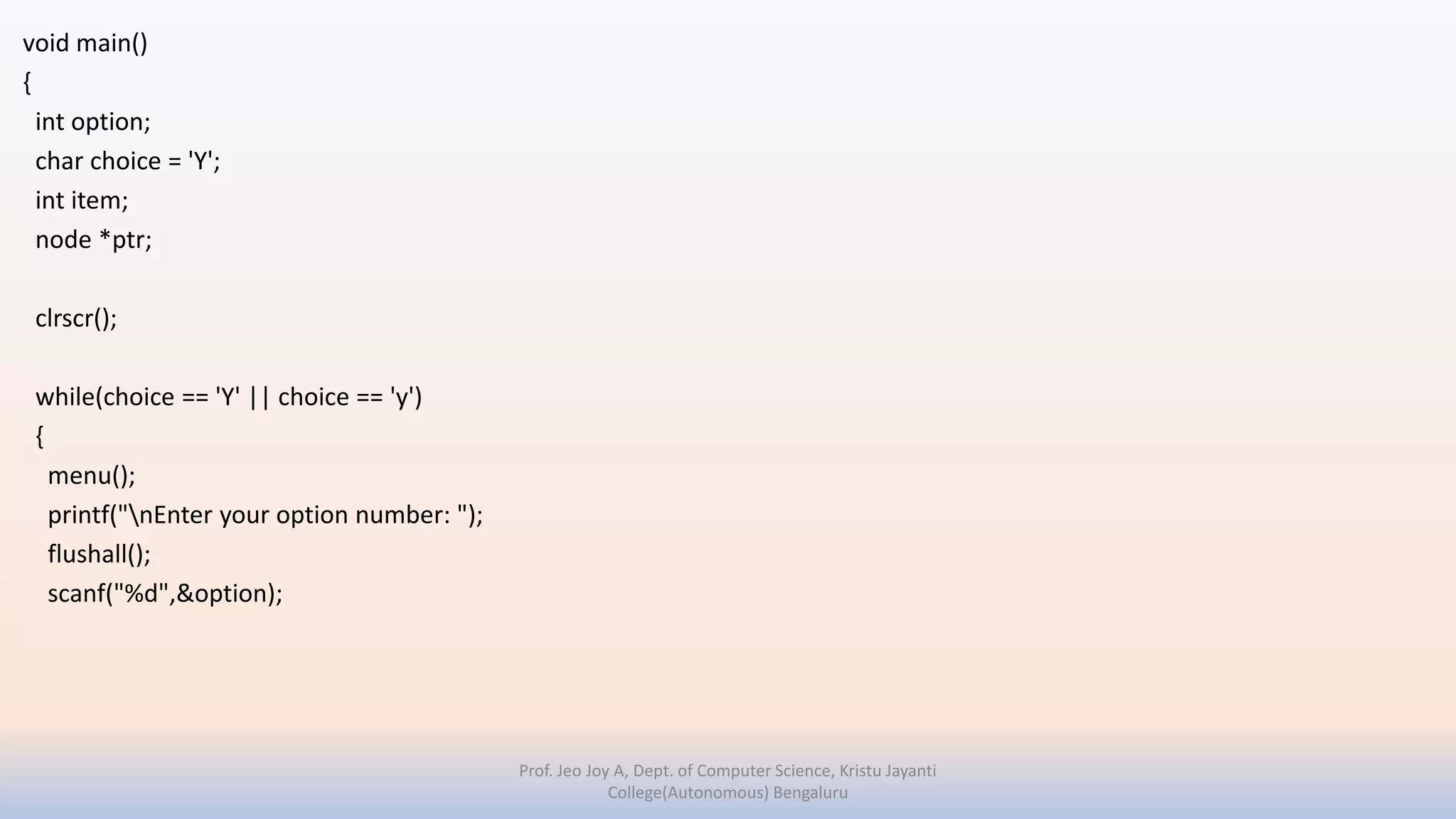
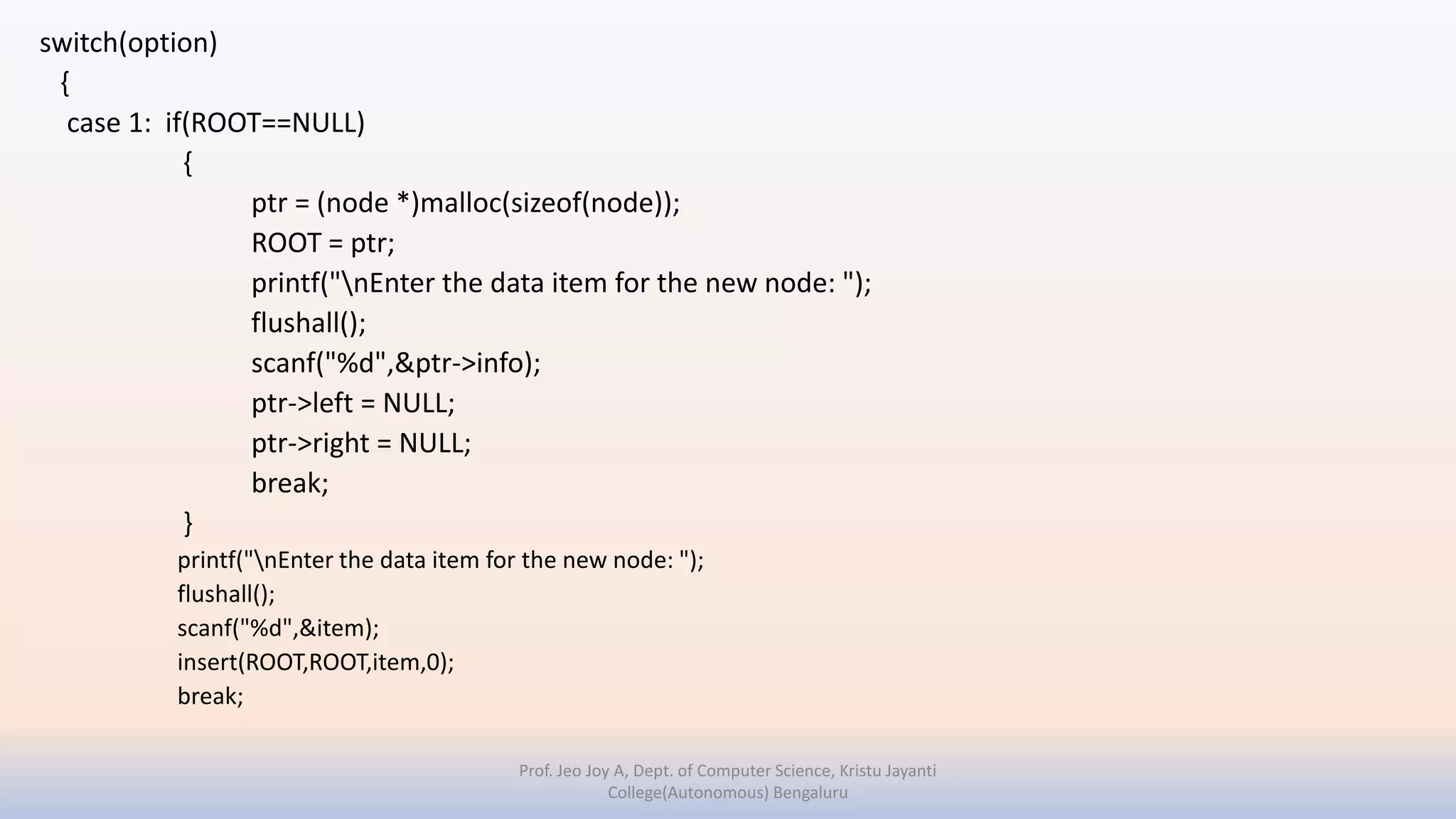
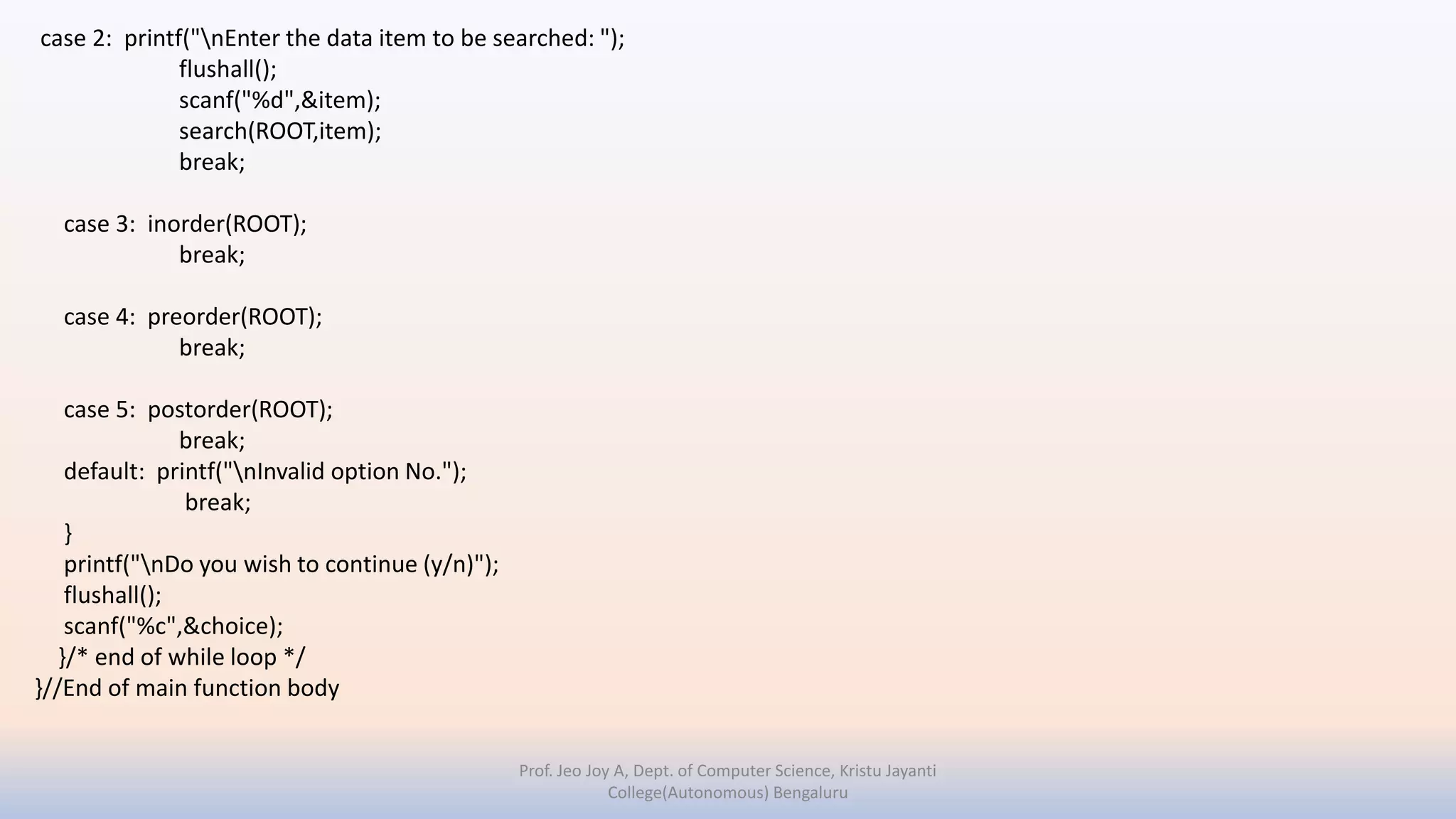

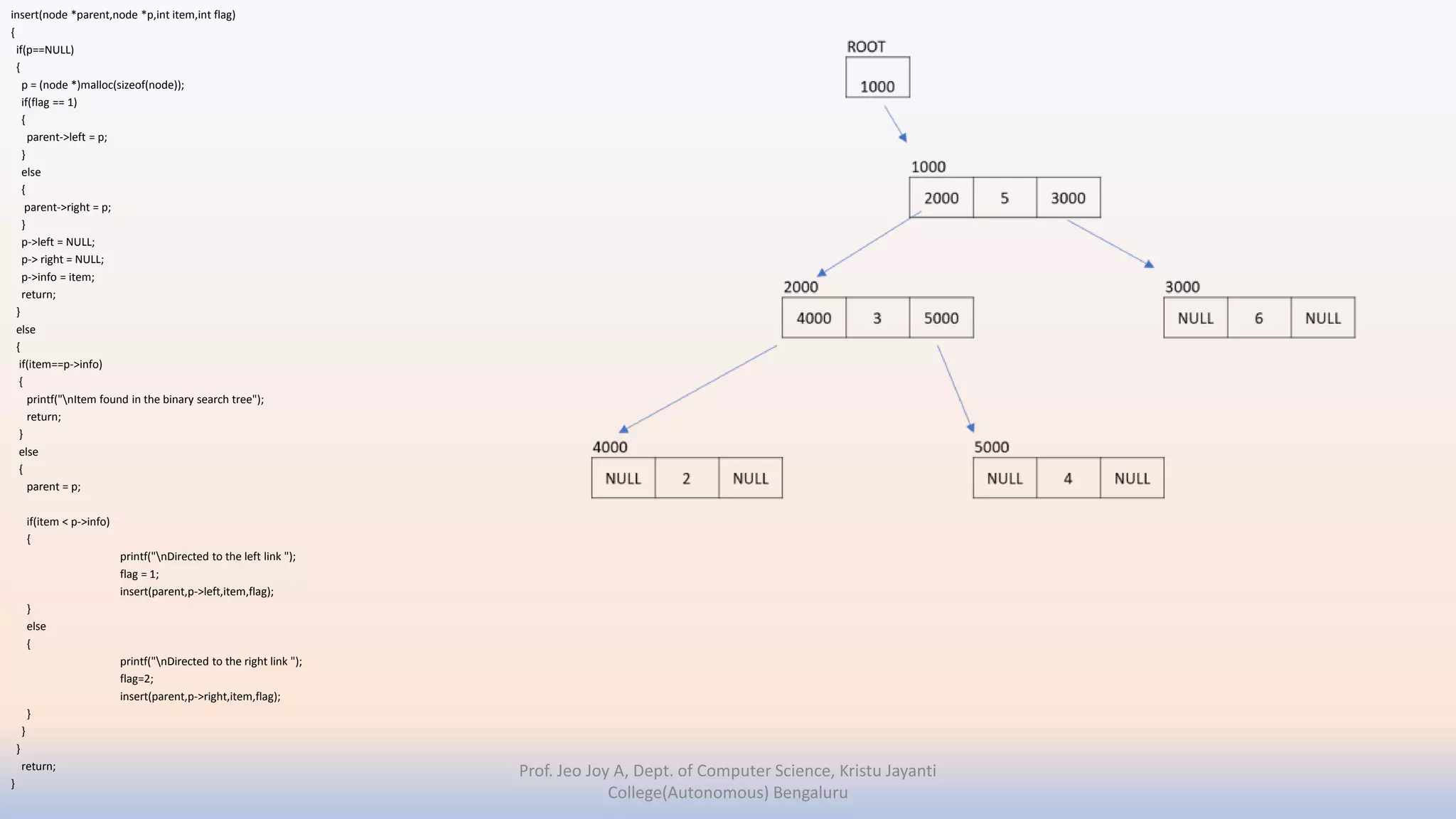

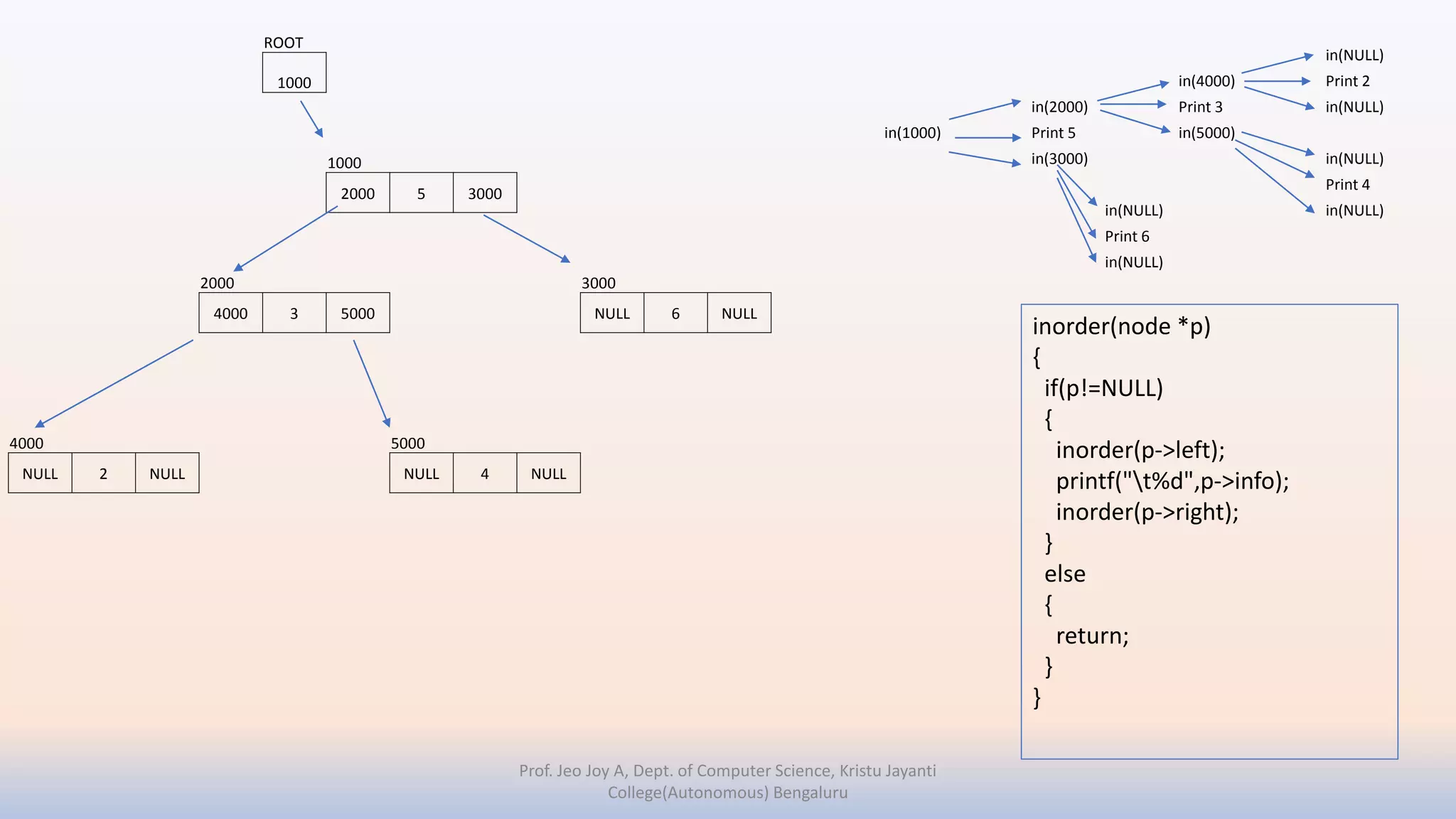

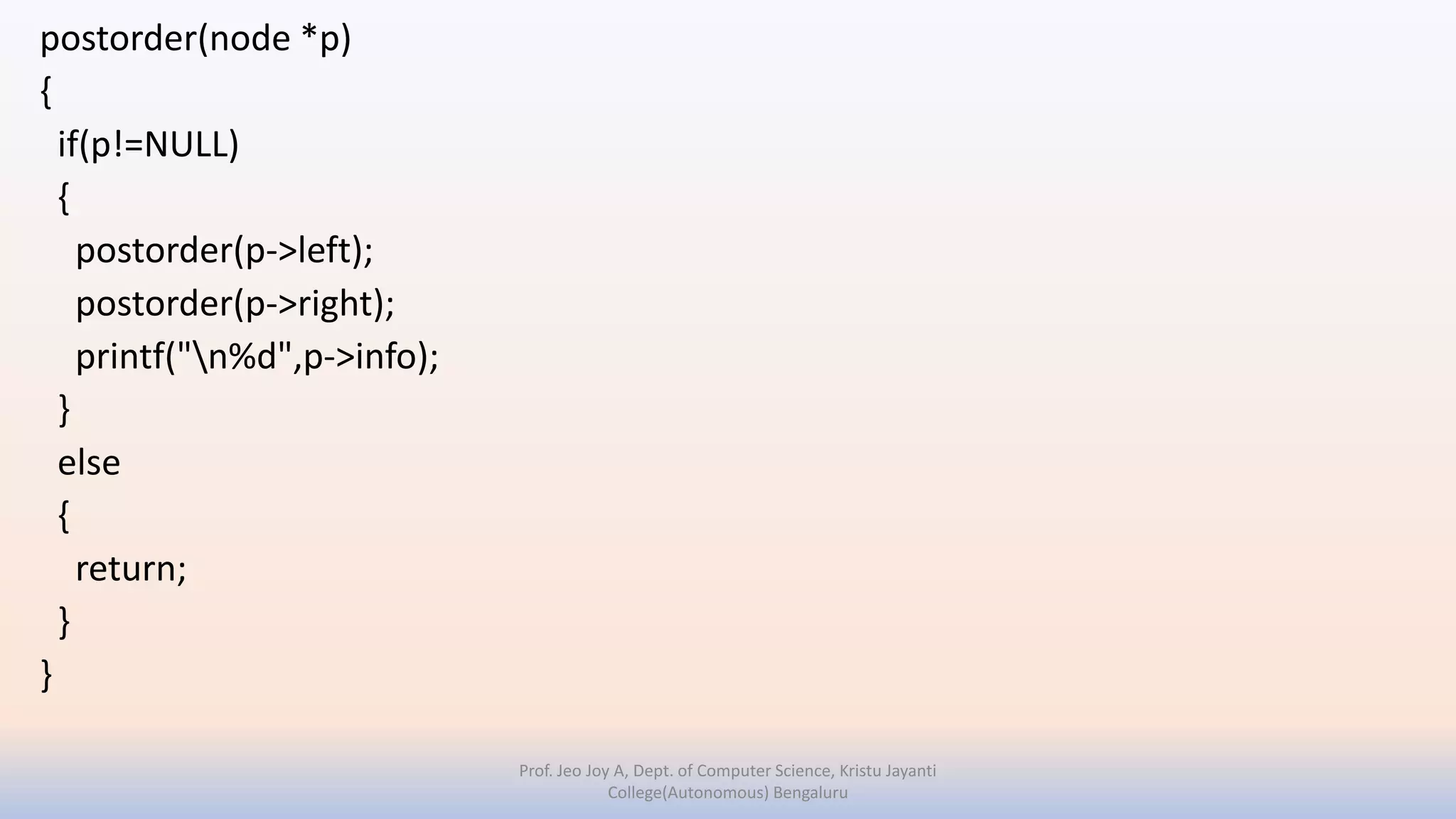
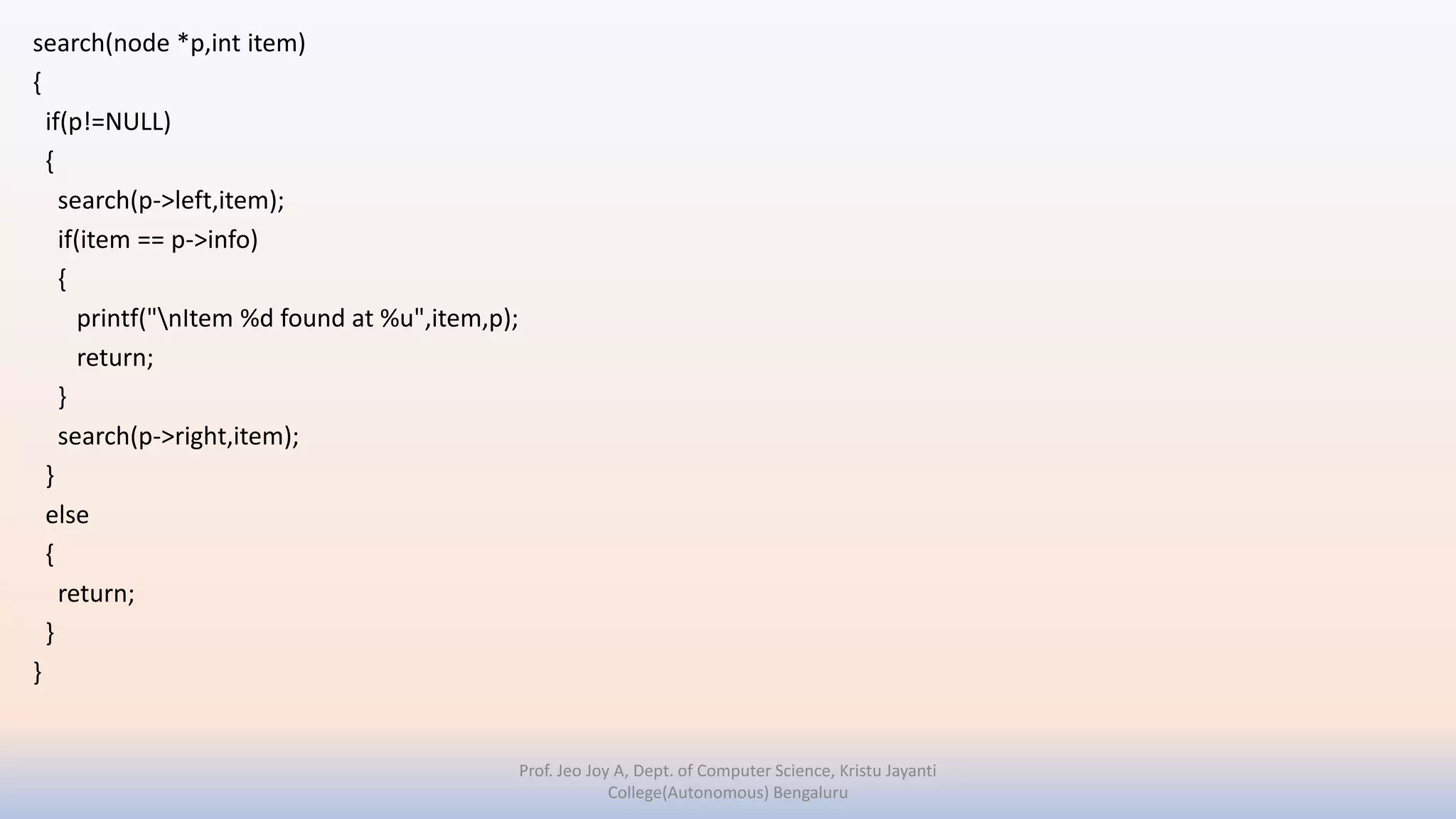
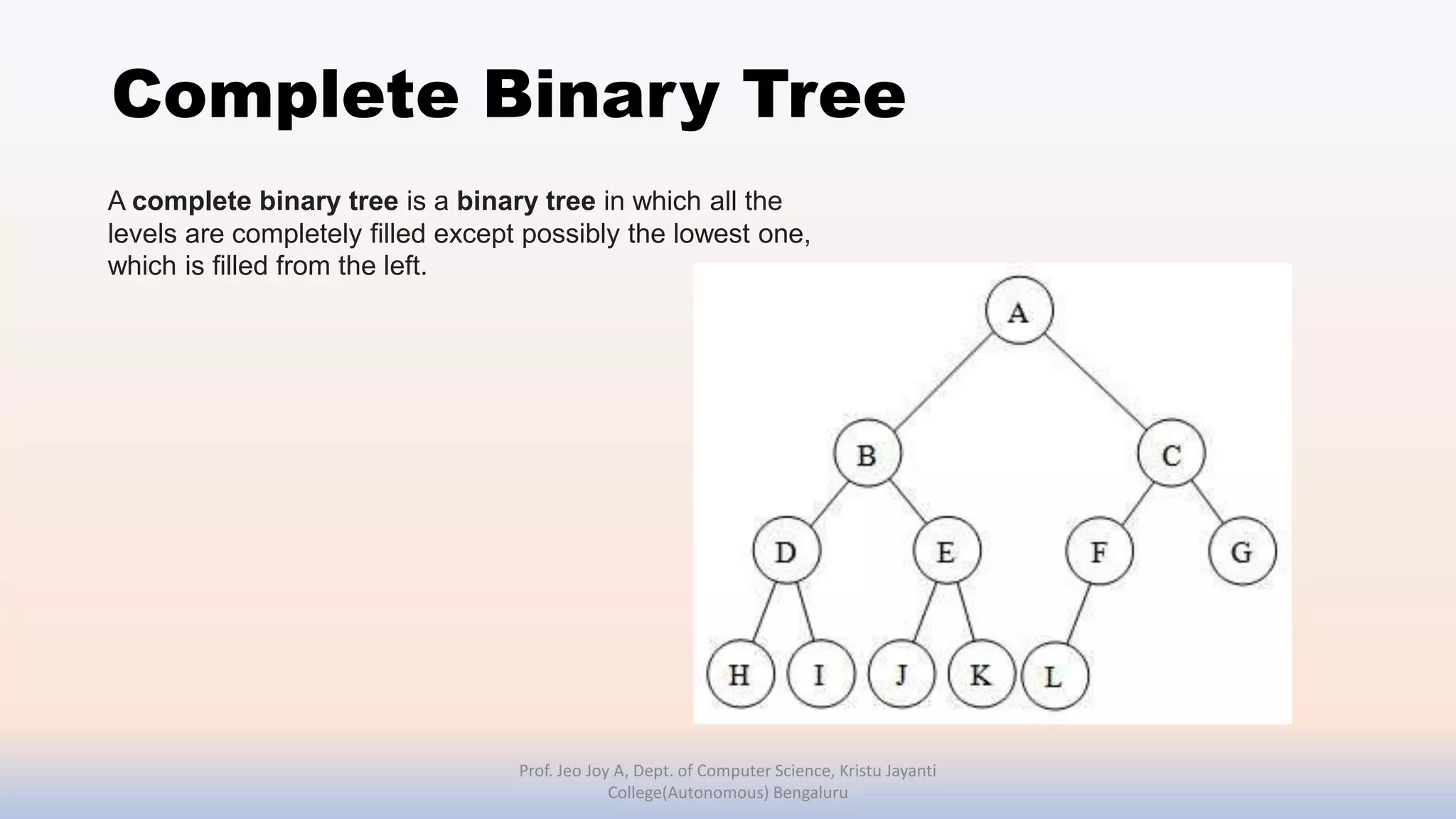
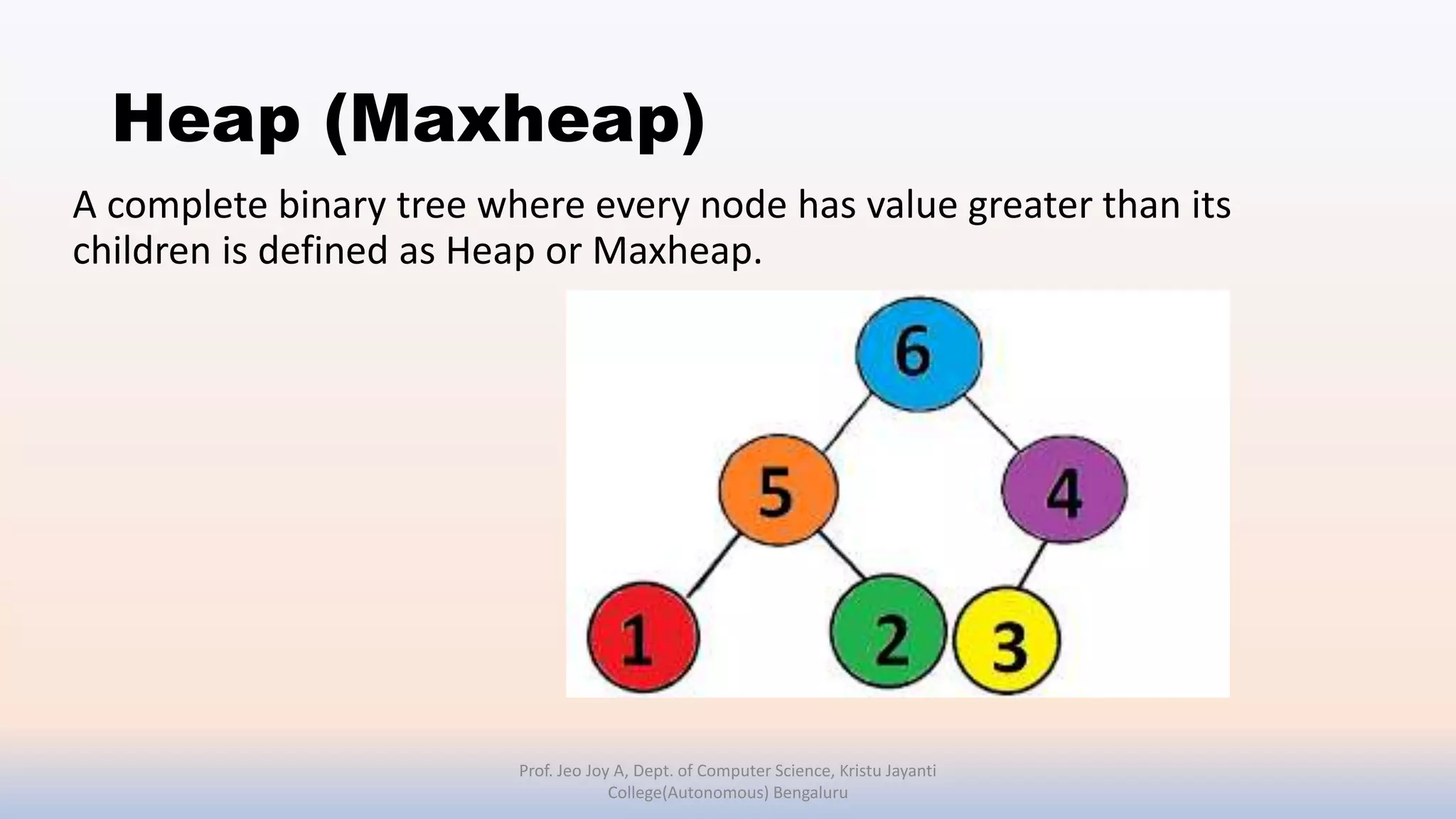
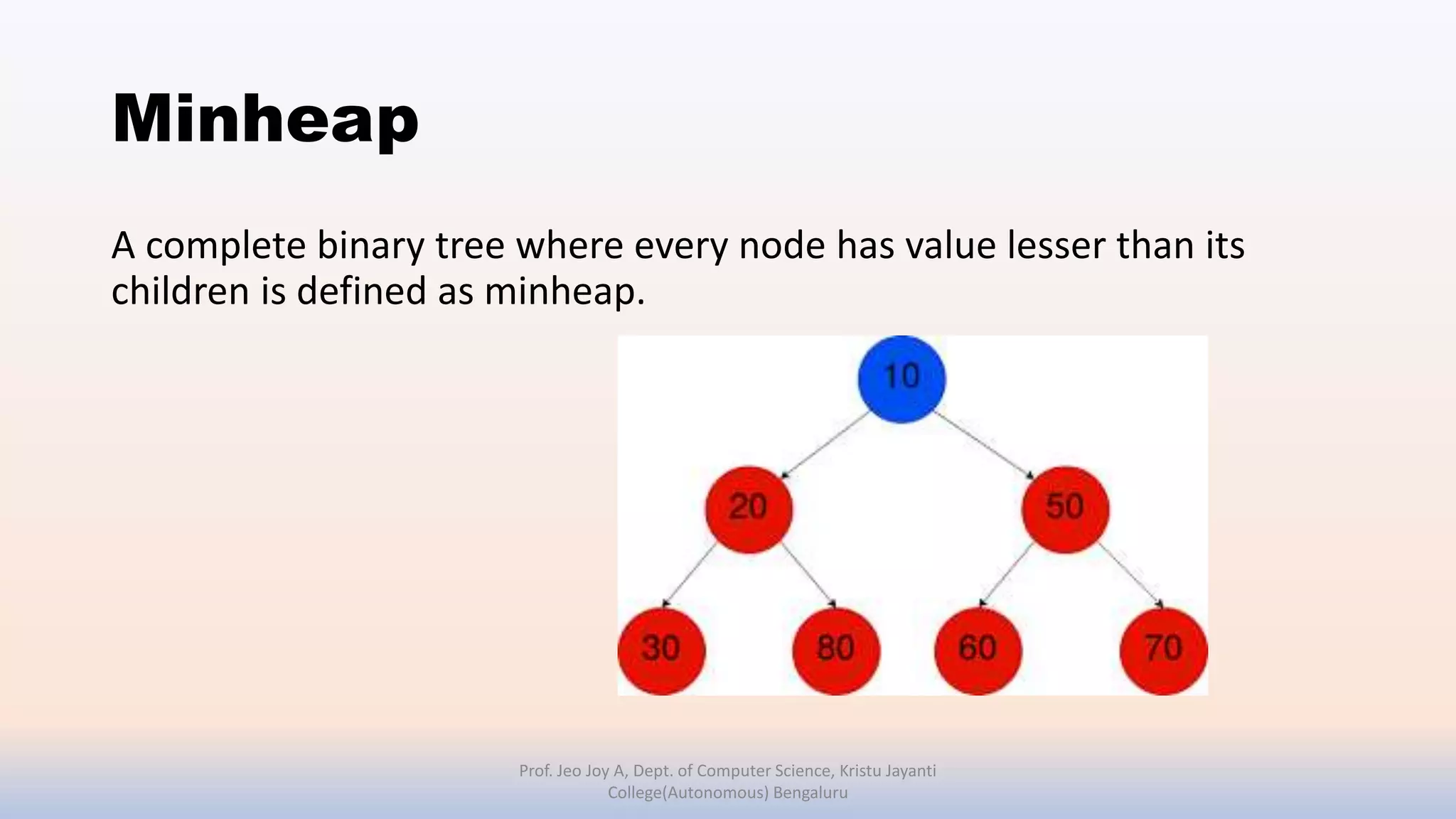



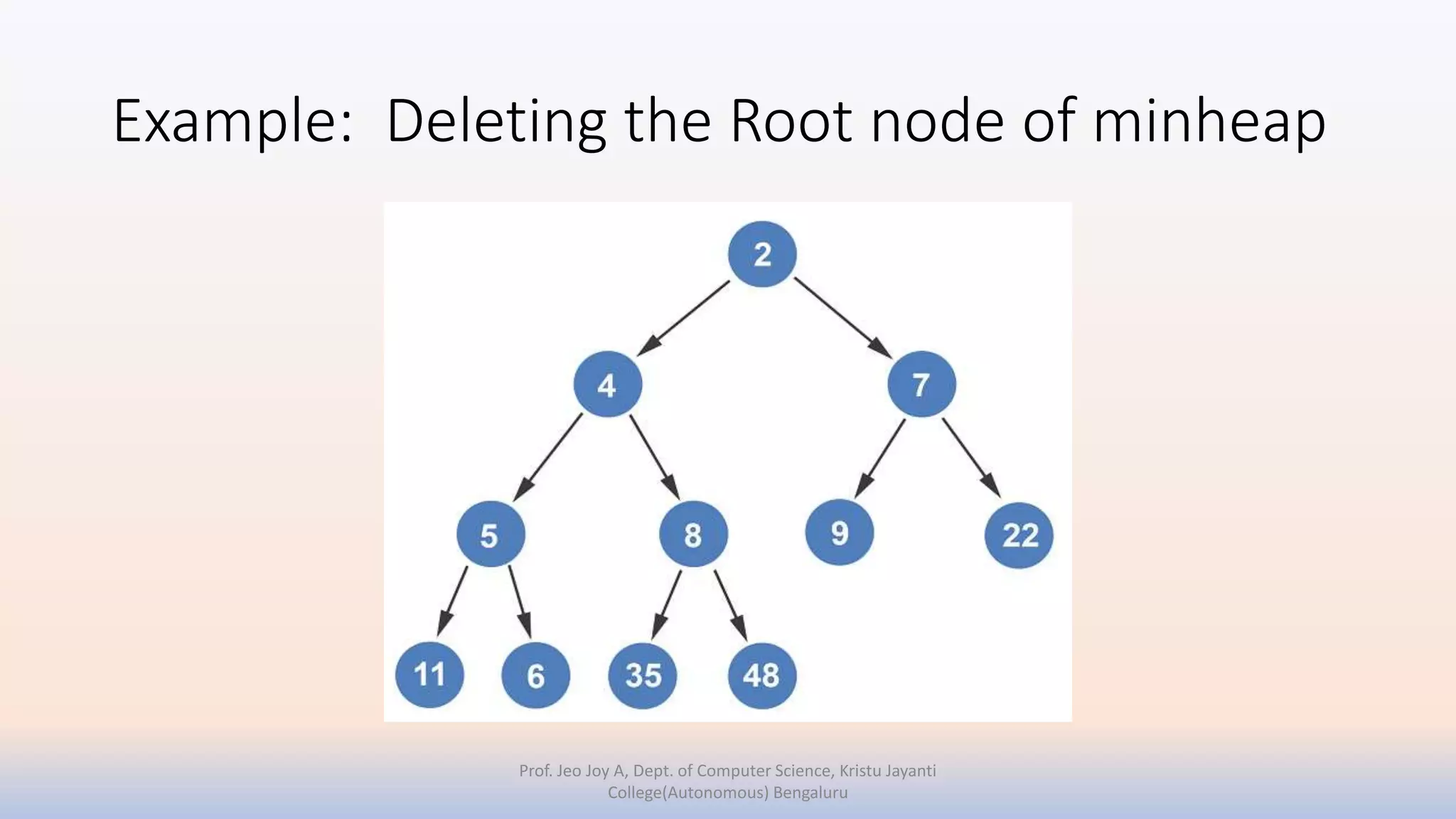
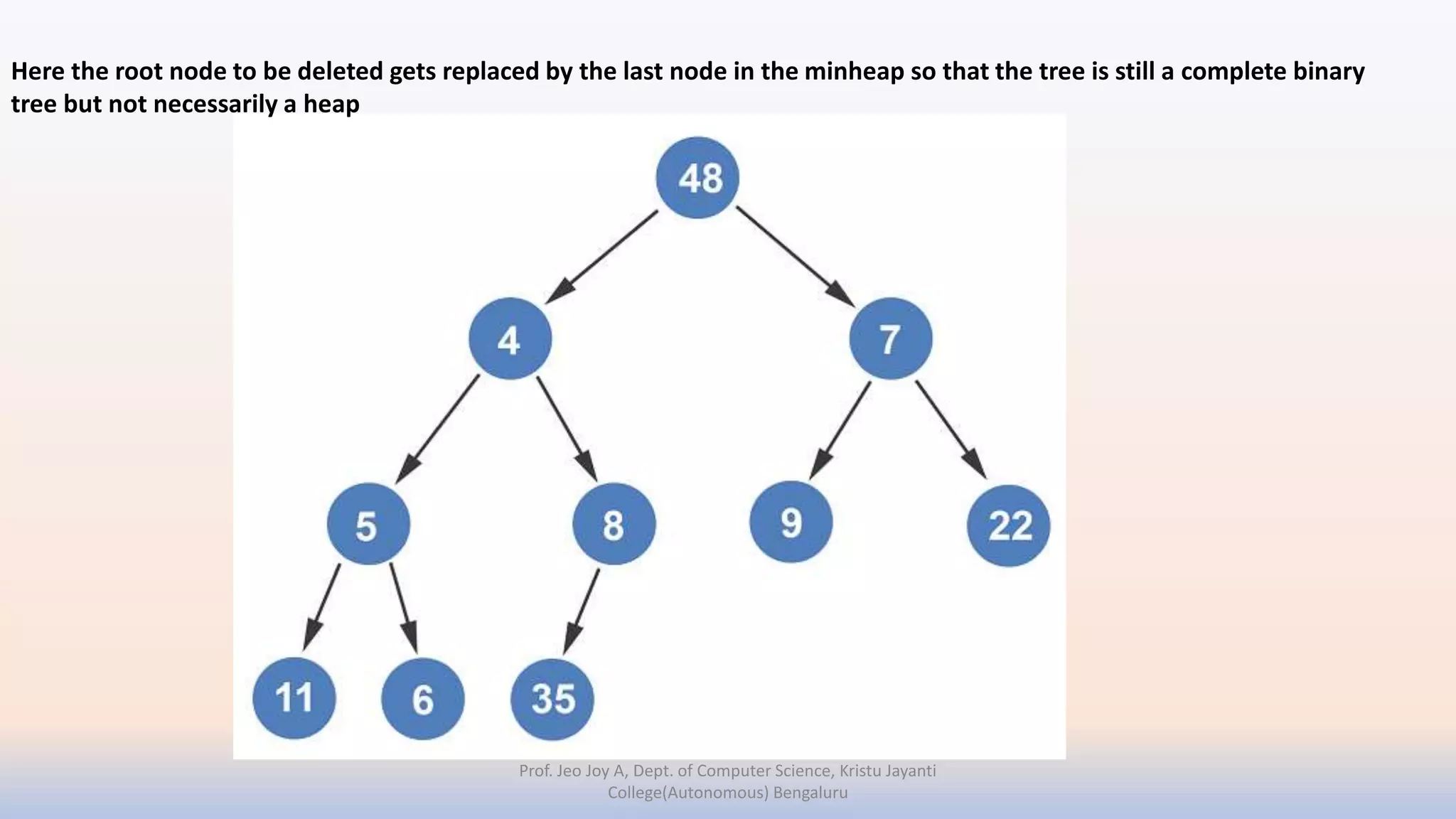


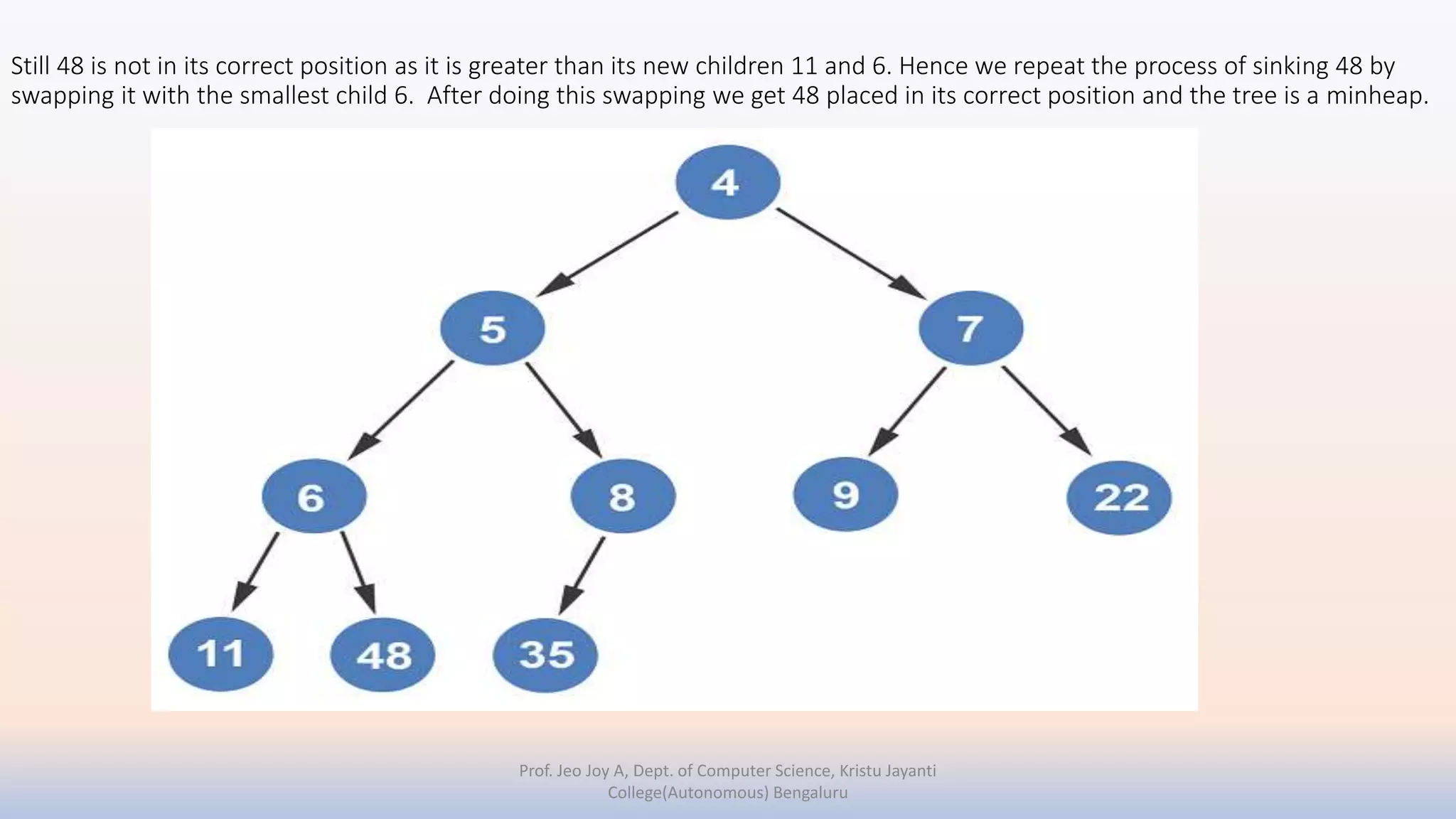
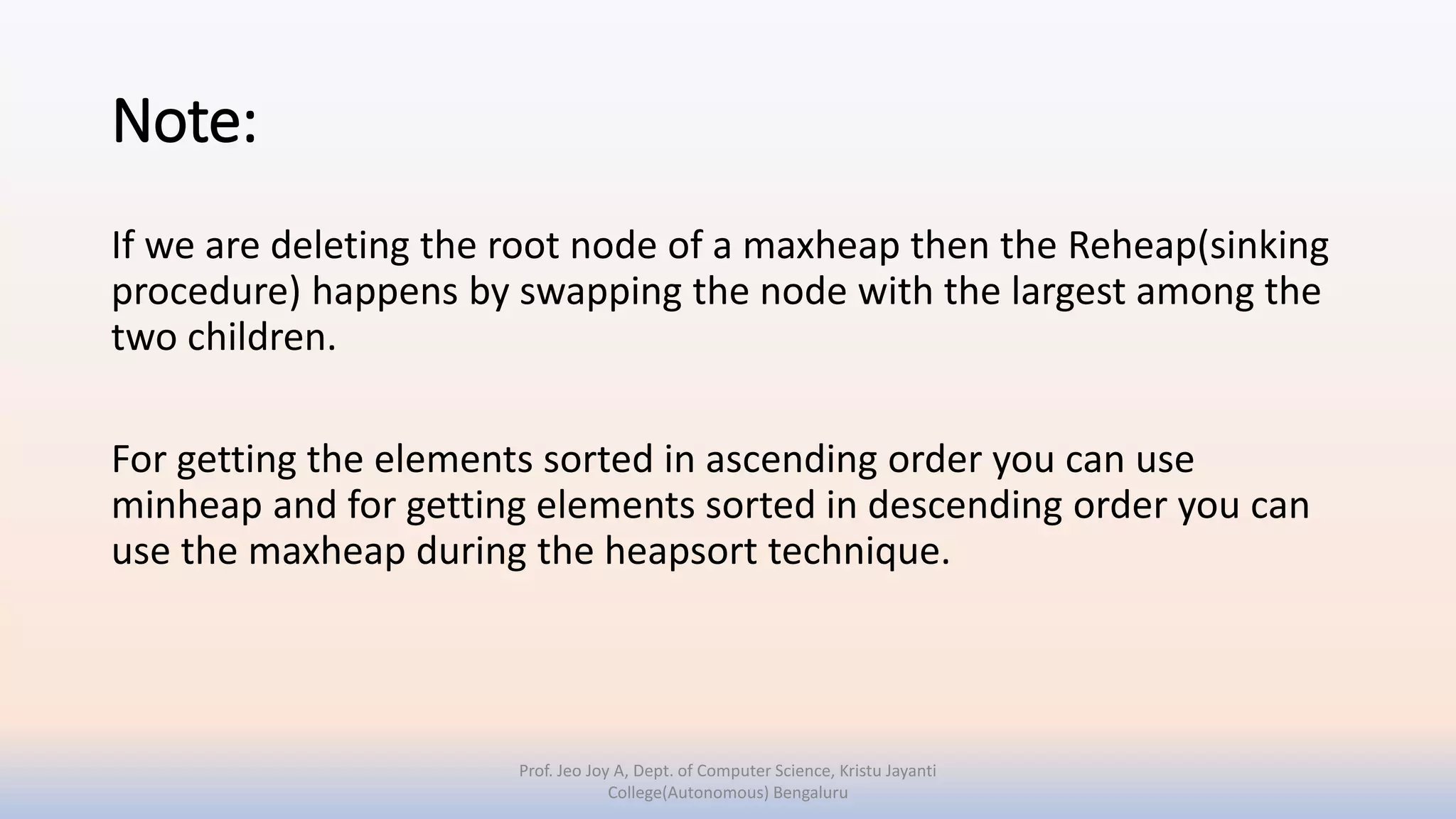
![Heap Sort Algorithm
Heapsort(A, N)
[A is an array with N elements. This algorithm sorts the elements of A using
heapsort technique.]
[Build a Heap]
Step 1: Repeatedly execute the steps 1a and 1b for the N elements and create a
heap
Step 1a: First adjoin ITEM at the end of H so that it is still a complete binary tree
but not necessarily a heap.
Step 1b: Then let ITEM rise to its appropriate place in H so that H is finally a heap.
Prof. Jeo Joy A, Dept. of Computer Science, Kristu Jayanti
College(Autonomous) Bengaluru](https://image.slidesharecdn.com/tree-220624121455-74bc06bc/75/Tree-pptx-63-2048.jpg)
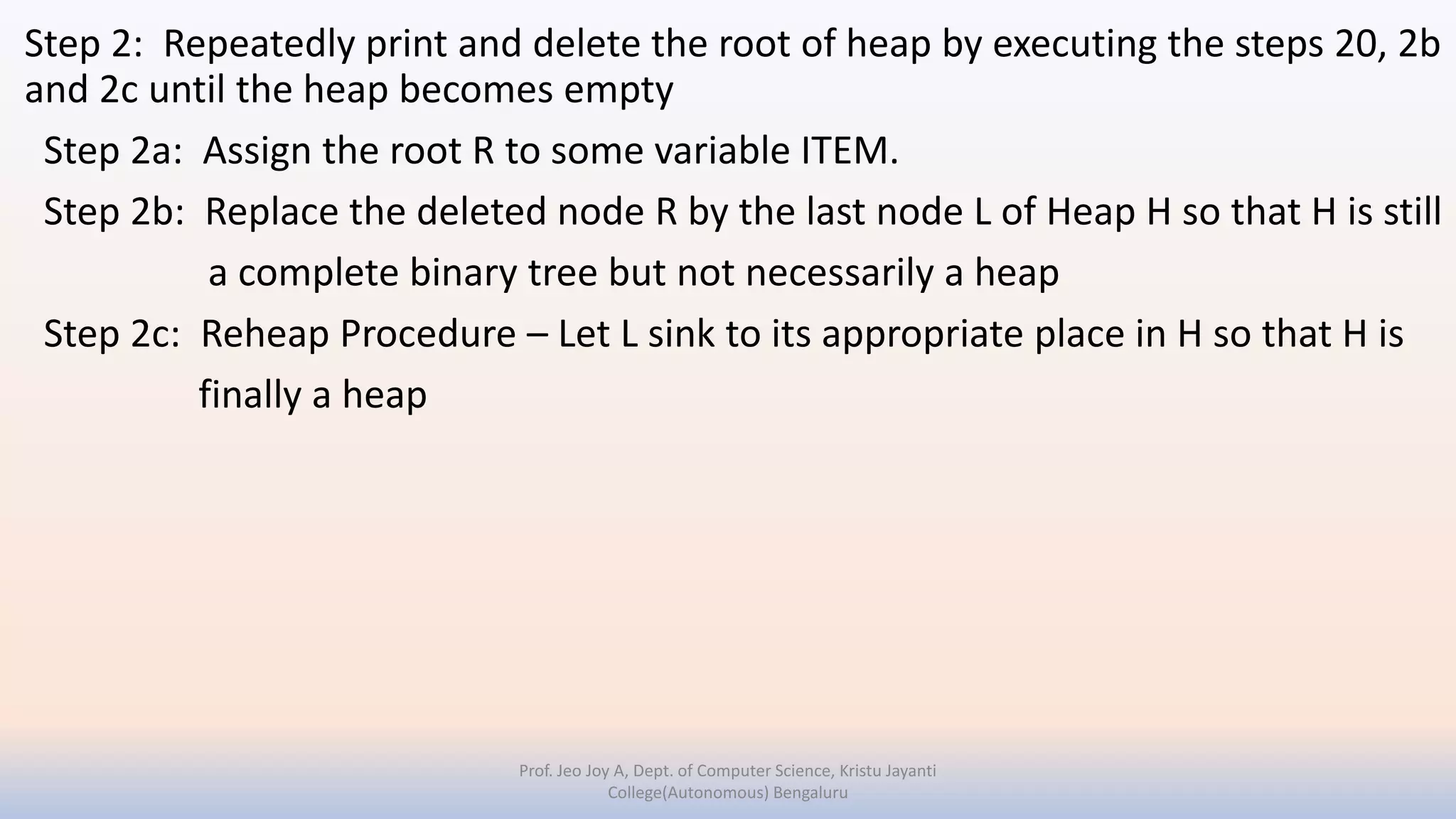
![Heap Sort Program – Array Implementation
#include<stdio.h>
void main()
{
static int i,j,flag,temp,a[25],n,num;
clrscr();
printf("nEnter the no. of elements: ");
flushall();
scanf("%d",&n);
printf("nEnter the %d elements",n);
/*insert the first element as the root */
flushall();
scanf("%d",&a[1]);
Prof. Jeo Joy A, Dept. of Computer Science, Kristu Jayanti
College(Autonomous) Bengaluru](https://image.slidesharecdn.com/tree-220624121455-74bc06bc/75/Tree-pptx-65-2048.jpg)
![/*insert the subsequent n-1 elements one at a time and creating a min heap simultaneously */
for(i=2;i<=n;i++)
{
flushall();
scanf("%d",&a[i]);
for(j=i;j>=2;j/=2)
{
if(a[j/2]>a[j])
{
temp = a[j/2];
a[j/2] = a[j];
a[j] = temp;
}
}
}
Prof. Jeo Joy A, Dept. of Computer Science, Kristu Jayanti
College(Autonomous) Bengaluru](https://image.slidesharecdn.com/tree-220624121455-74bc06bc/75/Tree-pptx-66-2048.jpg)
![printf("nElements inserted as min heapn");
for(i=1;i<=n;i++)
{
printf("%dt",a[i]);
}
printf("n");
Prof. Jeo Joy A, Dept. of Computer Science, Kristu Jayanti
College(Autonomous) Bengaluru](https://image.slidesharecdn.com/tree-220624121455-74bc06bc/75/Tree-pptx-67-2048.jpg)
![Prof. Jeo Joy A, Dept. of Computer Science, Kristu Jayanti
College(Autonomous) Bengaluru
for(num=n;num>=1;)
{
/* last element in the heap is copied as the
first element(root) so that it is still a complete binary tree */
printf("%dt",a[1]);
a[1] = a[num];
num= num - 1;
/* let the new root sink to its appropriate position to
make it a min heap */
for(j=1;((j*2) <= num)||((j*2+1) <= num);)
{
if(j*2+1 > num)
{
if(a[j]<a[j*2])
{
break;
}
}
if( (a[j]<a[j*2]) && (a[j]<a[j*2+1]) )
{
break;
}](https://image.slidesharecdn.com/tree-220624121455-74bc06bc/75/Tree-pptx-68-2048.jpg)
![else
{
if( (a[j] > a[j*2]) && (a[j] > a[j*2+1]))
{
temp = a[j];
if(a[j*2] < a[j*2+1])
{
a[j] = a[j*2];
a[j*2] = temp;
j = j * 2;
}
else
{
a[j] = a[j*2+1];
a[j*2+1] = temp;
j=j*2+1;
}
}
Prof. Jeo Joy A, Dept. of Computer Science, Kristu Jayanti
College(Autonomous) Bengaluru](https://image.slidesharecdn.com/tree-220624121455-74bc06bc/75/Tree-pptx-69-2048.jpg)
![else
{
if(a[j] > a[j*2])
{
temp = a[j];
a[j] = a[j*2];
a[j*2] = temp;
j = j*2;
}
else
{
temp = a[j];
a[j] = a[j*2+1];
a[j*2+1] = temp;
j = j*2+1;
}
}
}
}
}
}
Prof. Jeo Joy A, Dept. of Computer Science, Kristu Jayanti
College(Autonomous) Bengaluru](https://image.slidesharecdn.com/tree-220624121455-74bc06bc/75/Tree-pptx-70-2048.jpg)